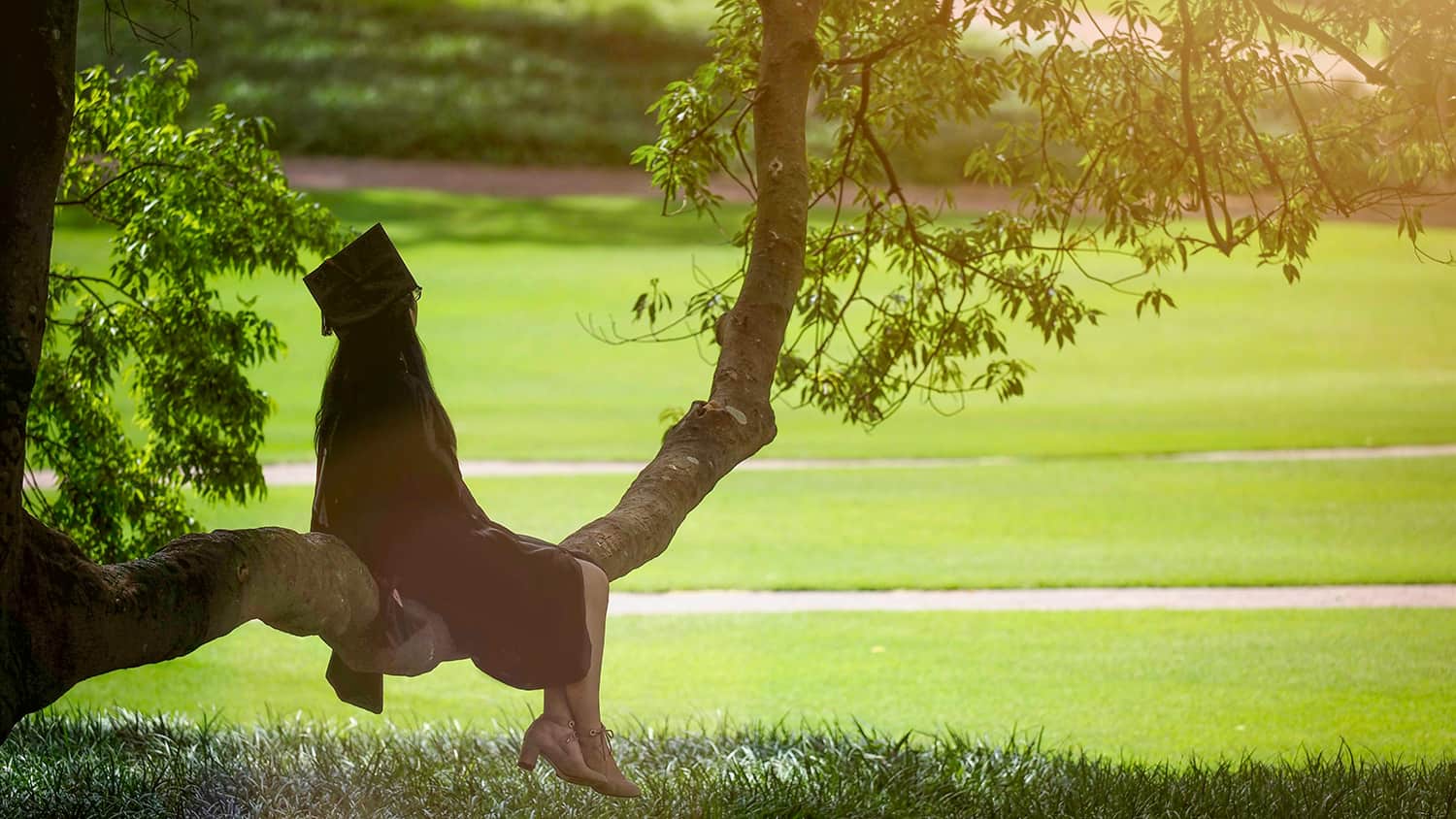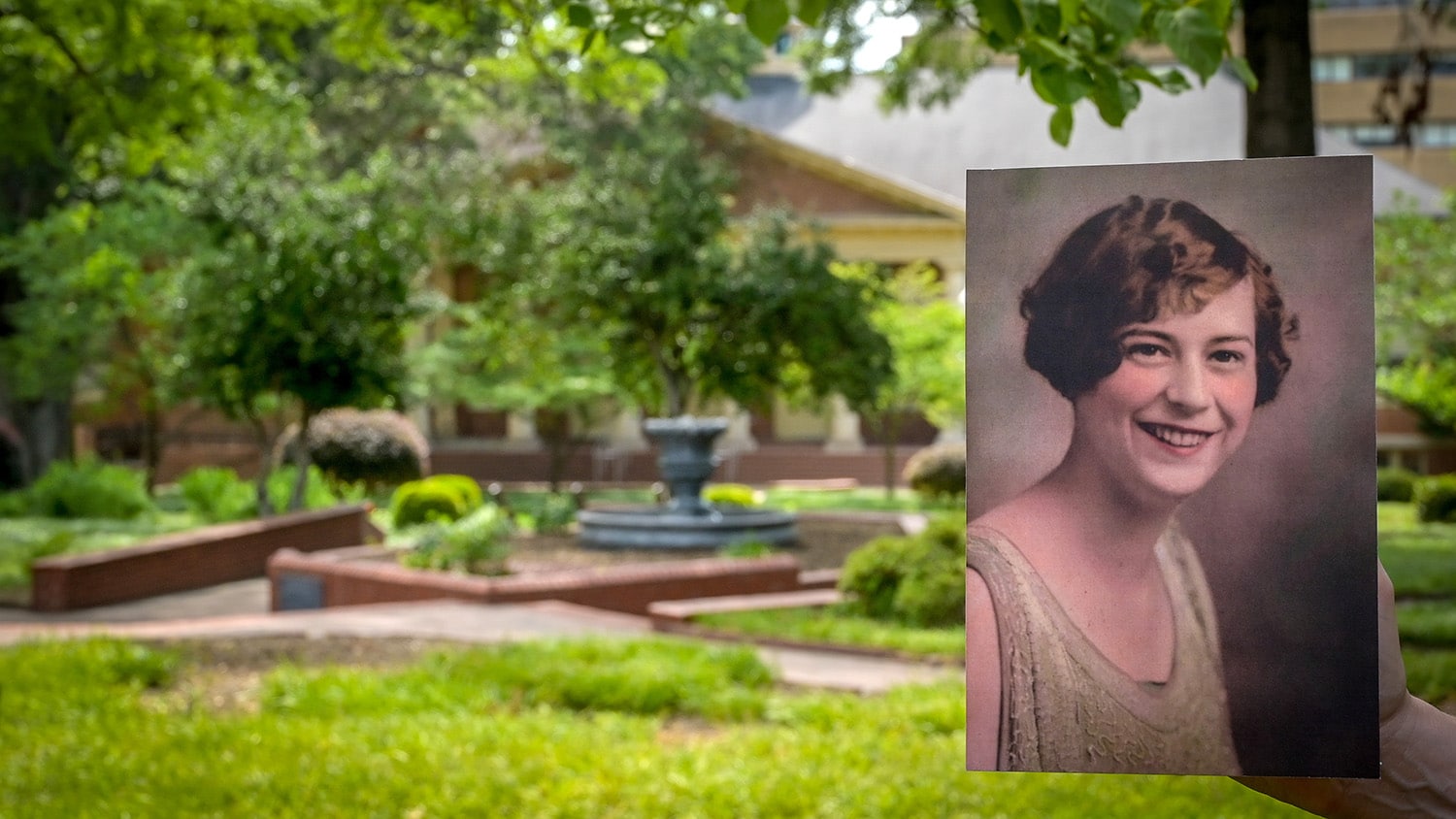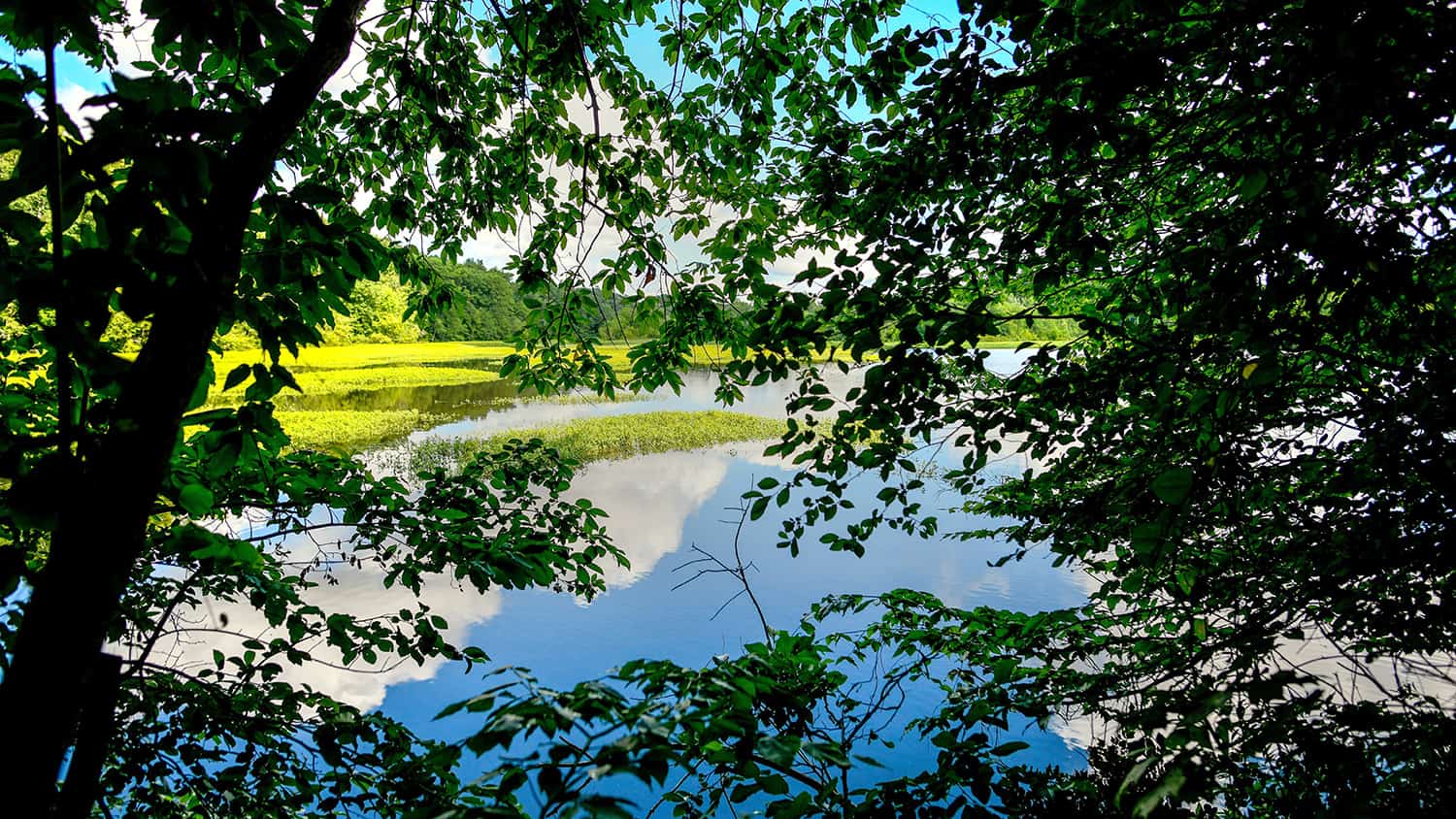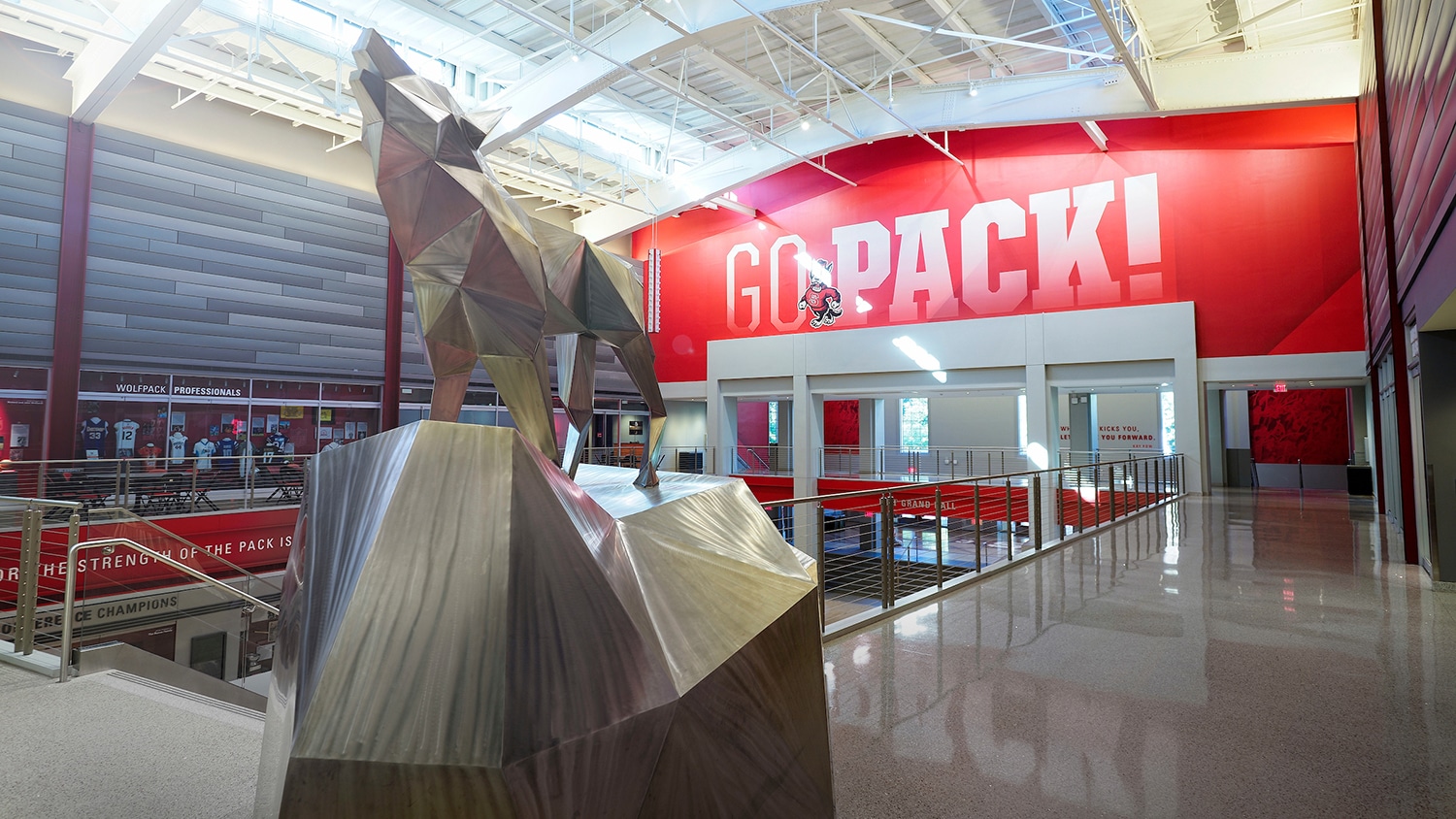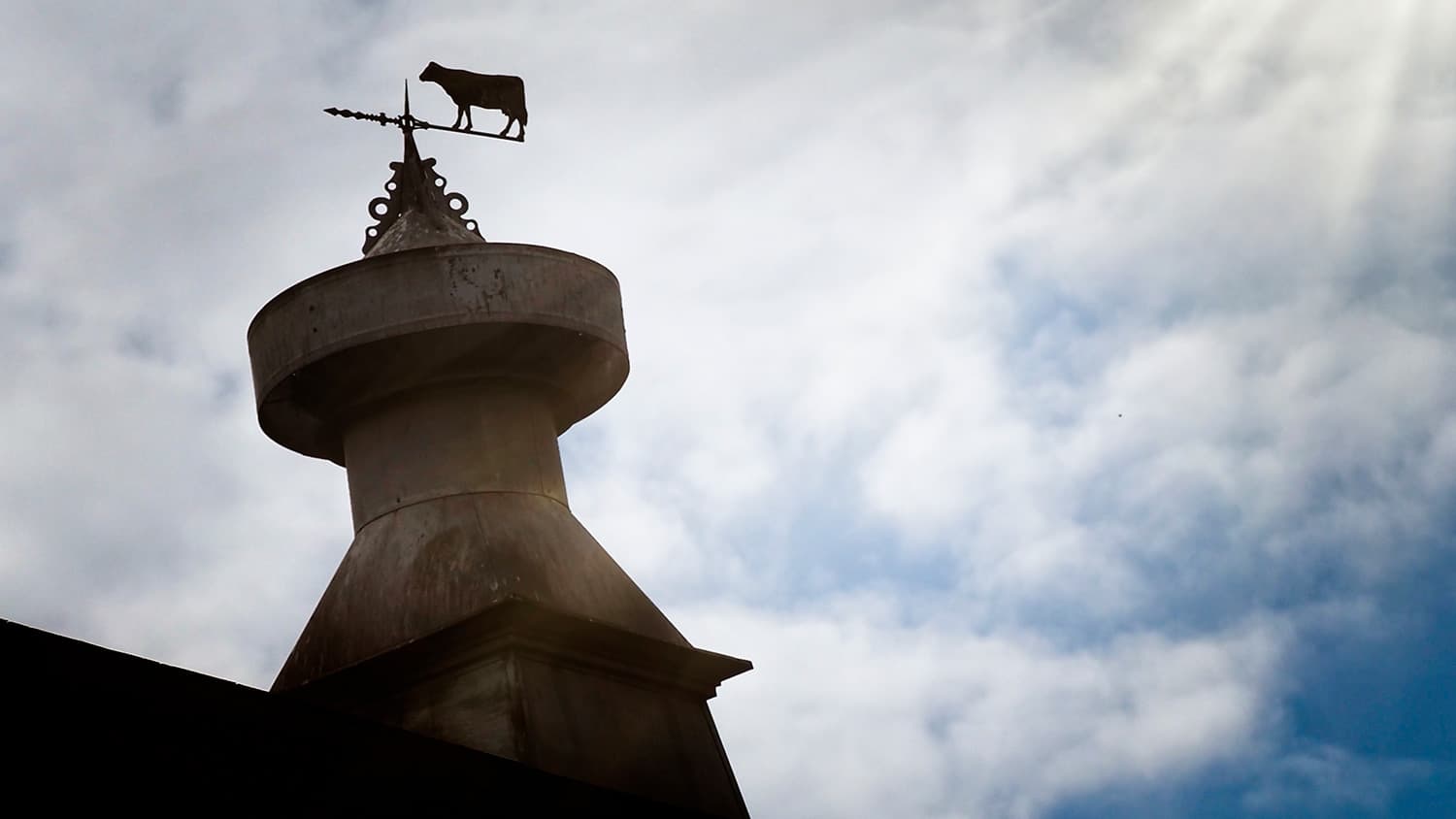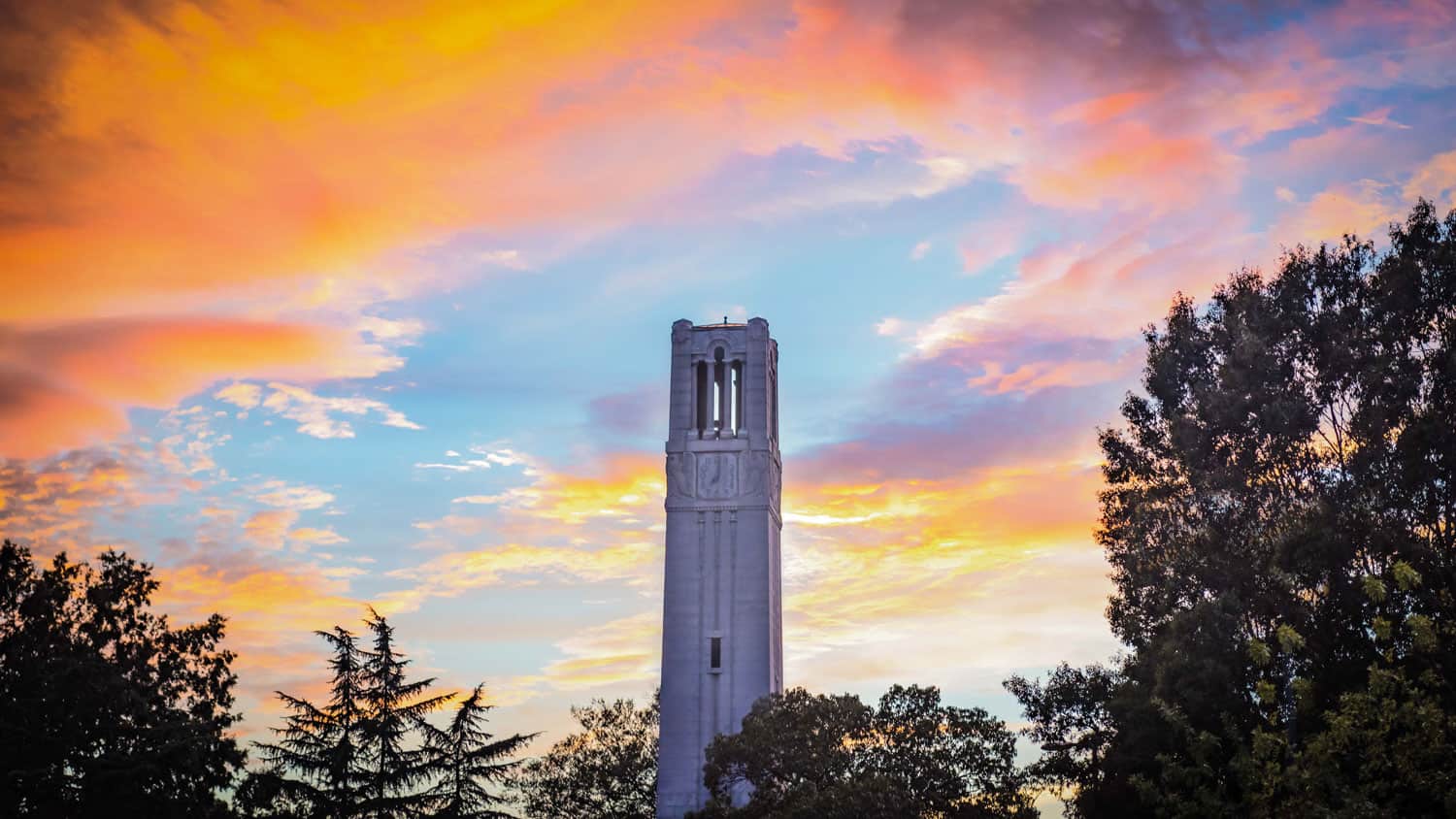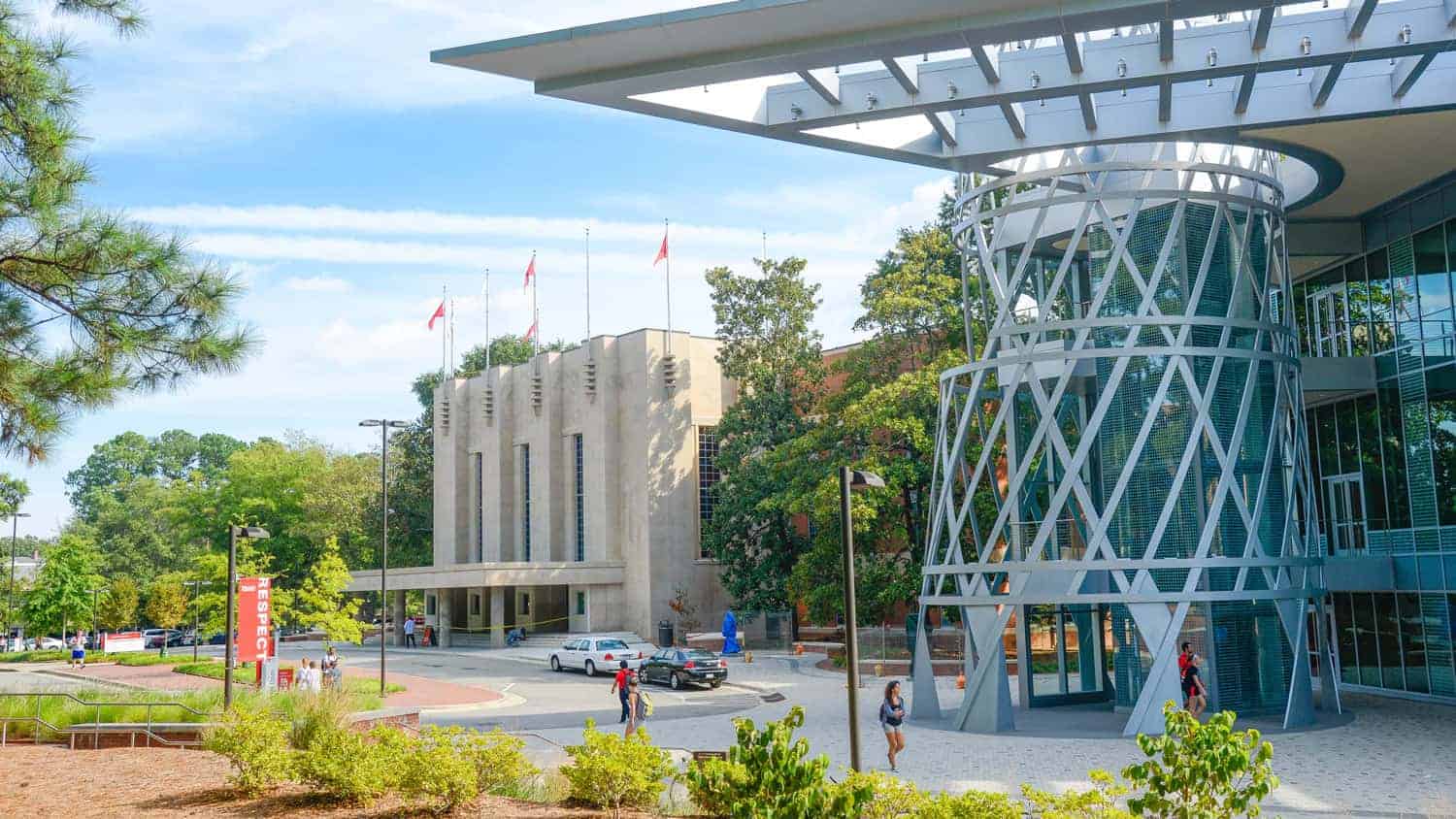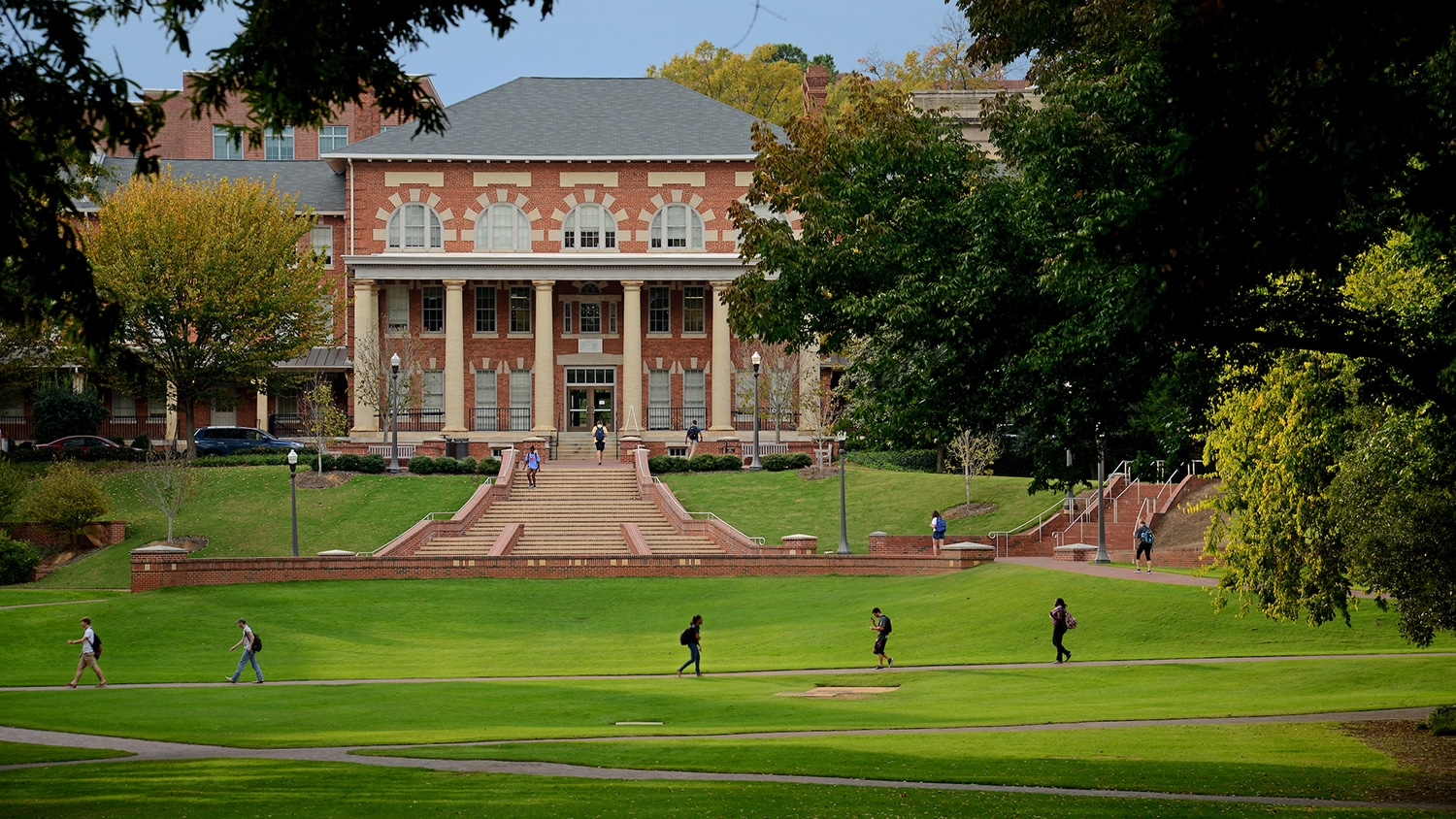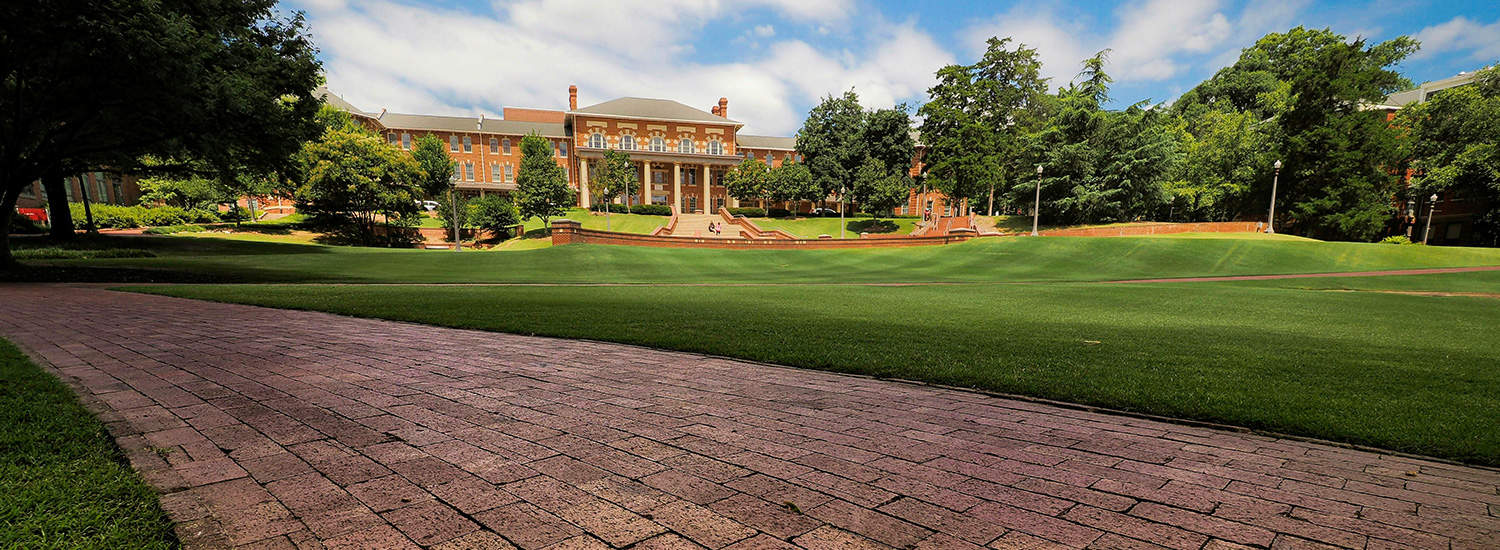
Hallowed Places
Ten spaces. Countless memories. Take a stroll through the landmarks that have made an indelible mark on the Wolfpack for generations.
Jump to a space
Standing Ever-Cherished
Dotted throughout campus, you’ll find 10 locations with a special designation.
Marked by plaques, they range from historic, brick-laden blocks to sprawling acres of lush greenery. The university defines them as “irreplaceable campus buildings, landscapes and natural settings that have accrued special meaning over time.”
They’re all places that matter to us. Places for quiet, reflective moments or raucous, eruptive celebrations. Places to soak up the first warm day of spring and revel after the last exam of the fall semester. Places that live in the hearts of our students and alumni — even when they’re far from home.
These are NC State’s Hallowed Places.
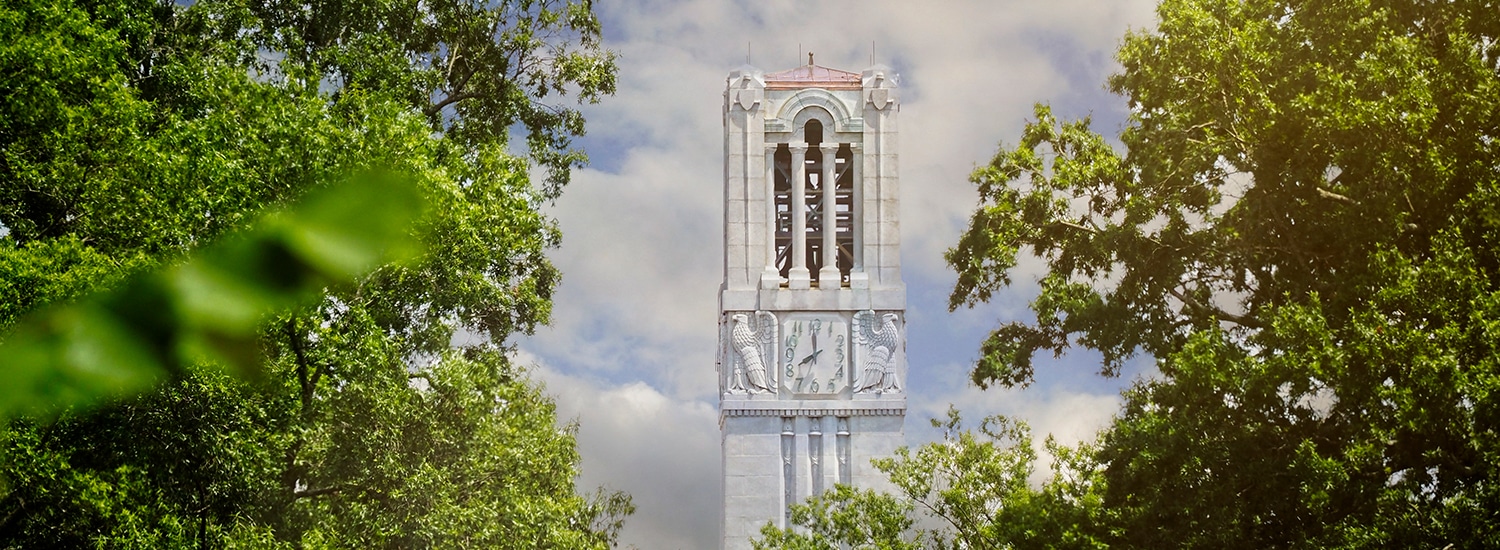

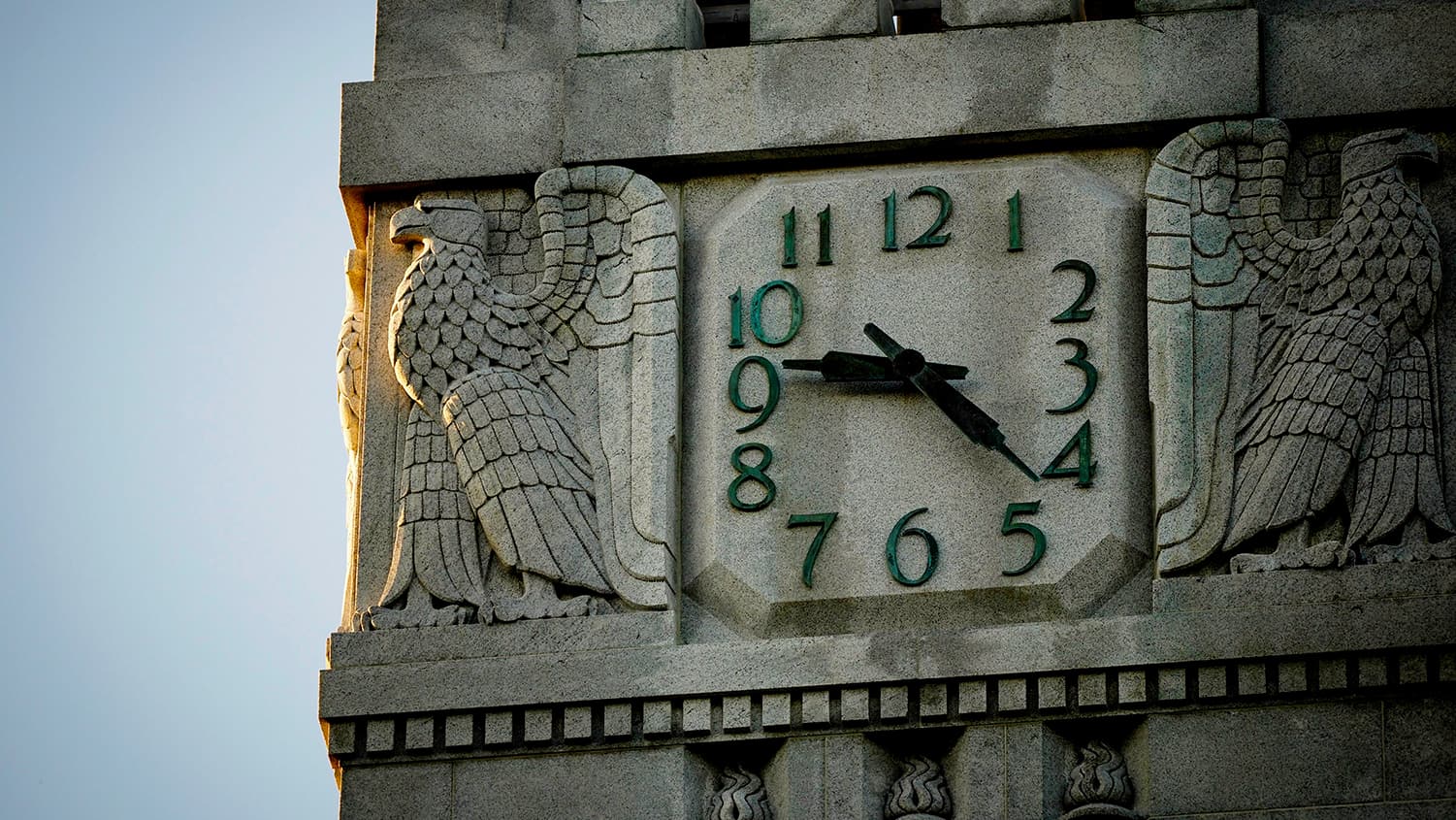
Memorial Belltower
Rising 115 feet above the entrance to our main campus, you’ll find a legend in stone. NC State’s Memorial Belltower, its cornerstone laid in 1921, honors university alumni lost in World War I. The landmark stands as a timekeeper of tradition and a perpetual monument to those who gave their lives to serve our nation. (If you see it washed in red light, that means we’re celebrating an academic, athletic or research success.)
The spot serves as a rallying point for the campus community, where ravenous runners convene during the annual Krispy Kreme Challenge, ROTC cadets receive their commissions and seniors drop off class rings to spend a night in the shrine room before commencement ceremonies.
For a century, the beloved site was missing something surprising: bells. Now, long-awaited chimes ring out as a result of an extraordinary effort that replaced speakers in the belfry with a full carillon of 55 bells.
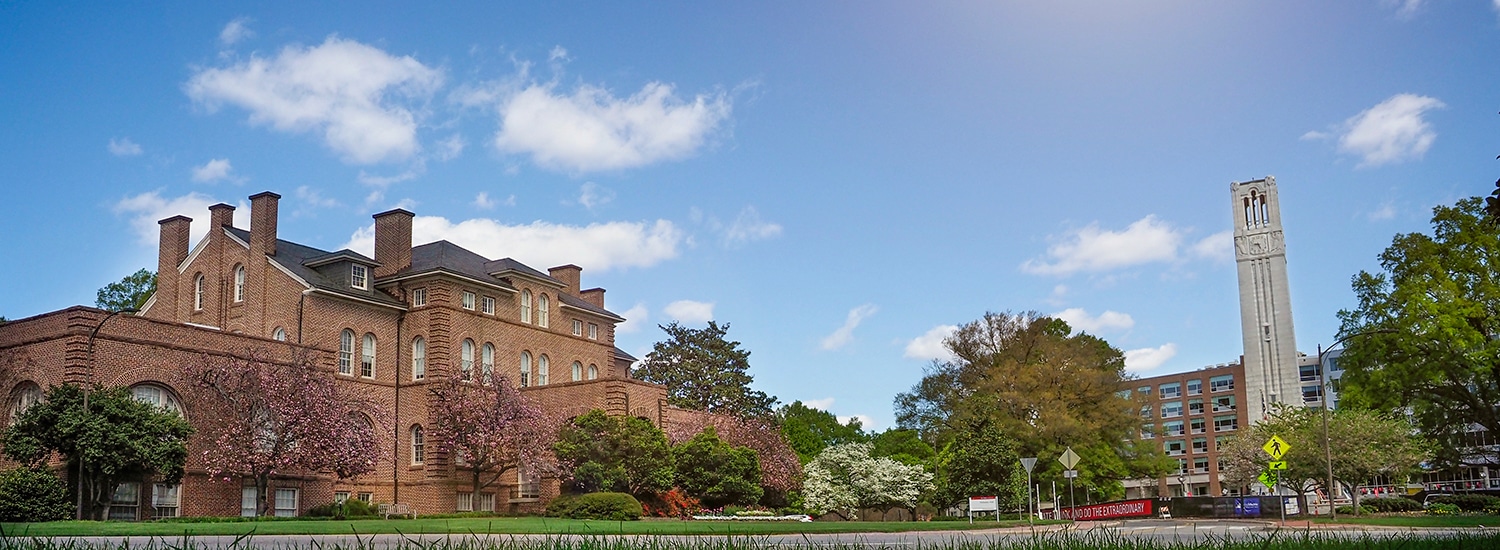
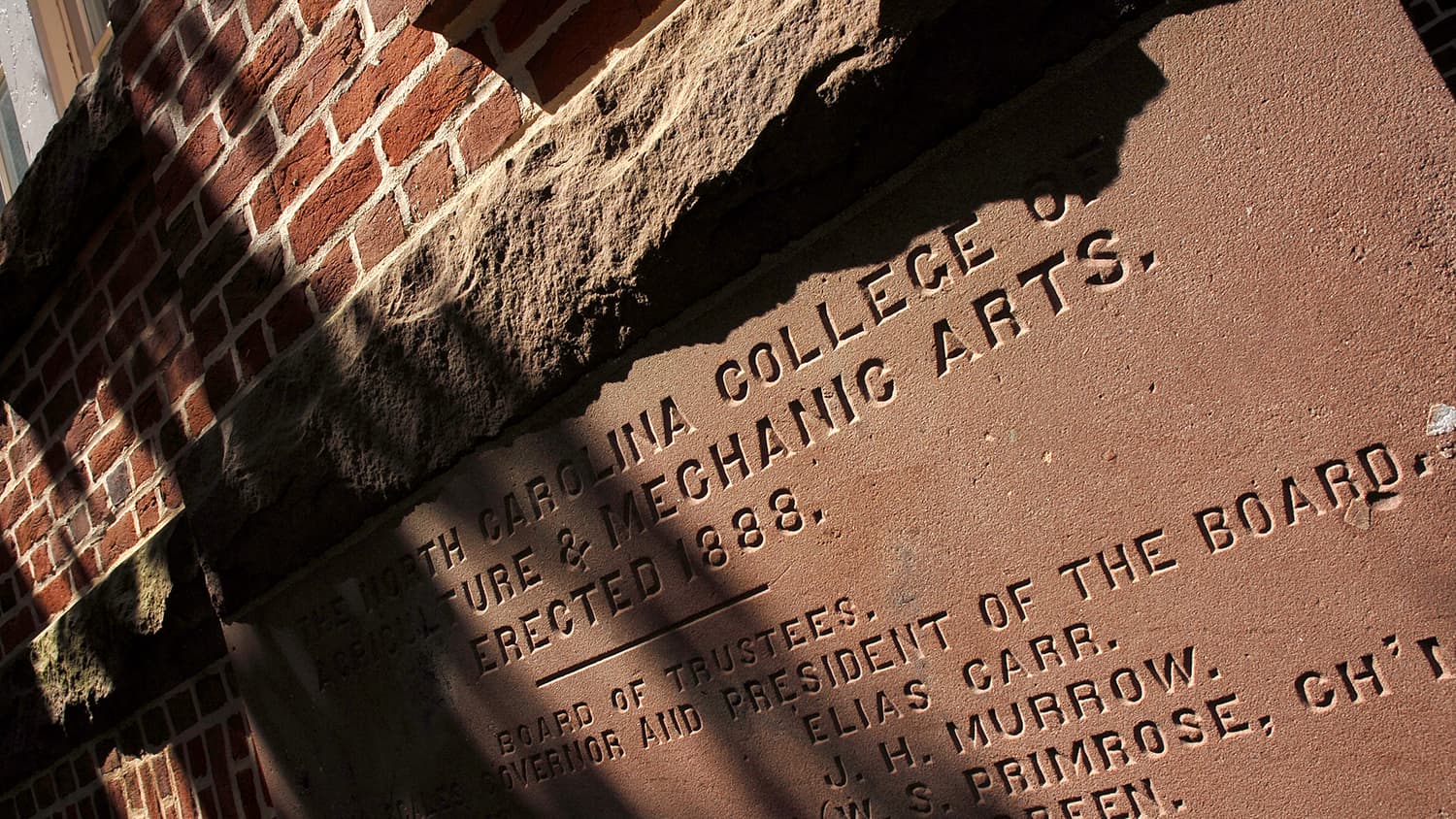
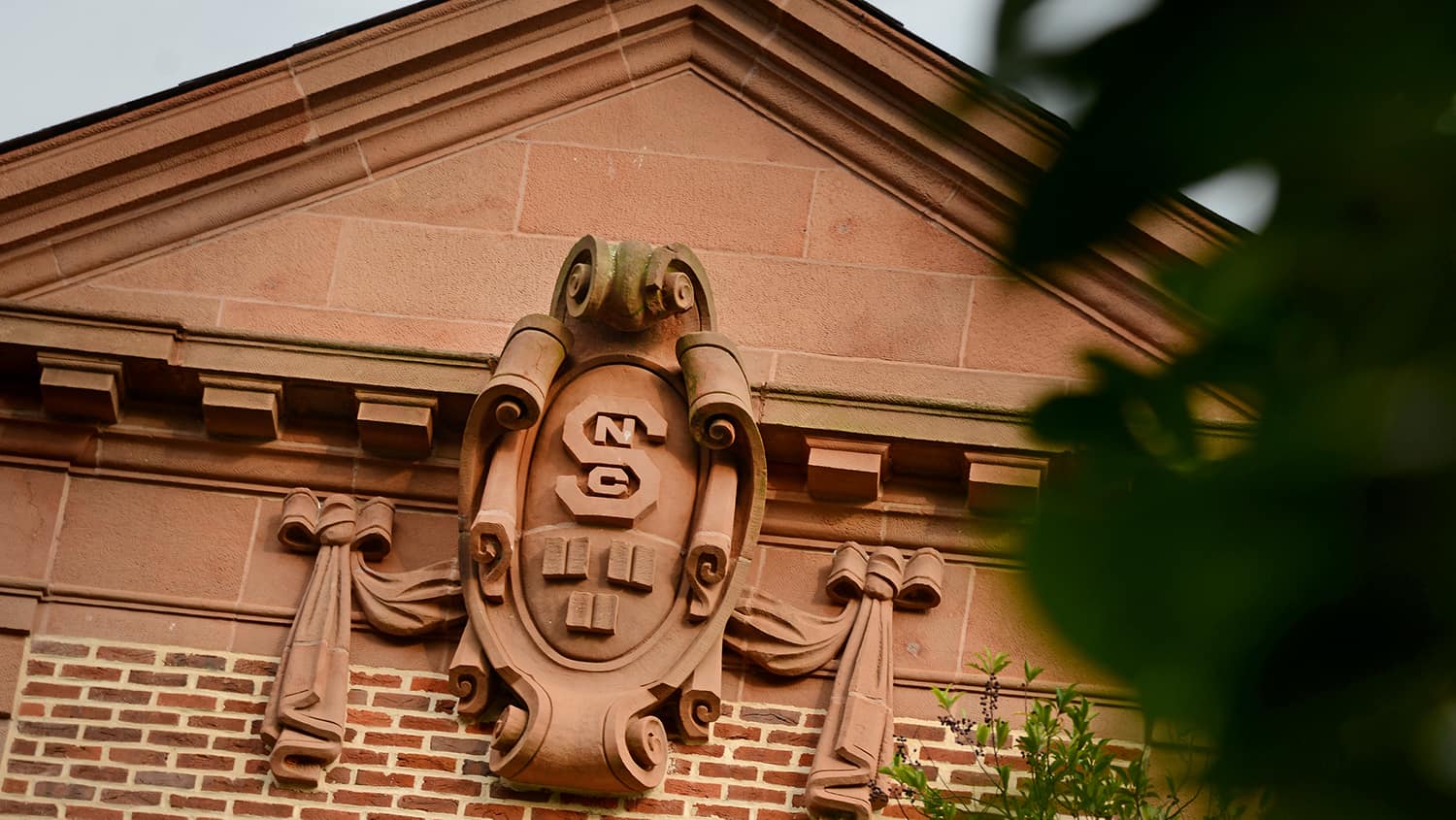
Holladay Hall
Our campus stretches across more than 2,000 acres today, but it all began in one building: Holladay Hall.
NC State’s original home opened its doors in 1889. The structure, named after the university’s first president, was built from more than 1.2 million bricks and had no electricity or running water. Lower floors contained laboratories, a dining hall, a gymnasium and a library. The entirety of the all-male student body — just 72 students — resided on the second and third floors. Back then, annual tuition set them back a mere $130.
Today, the space houses the offices of Chancellor Randy Woodson, and its hallowed (and possibly haunted) halls are lined with portraits of past chancellors.
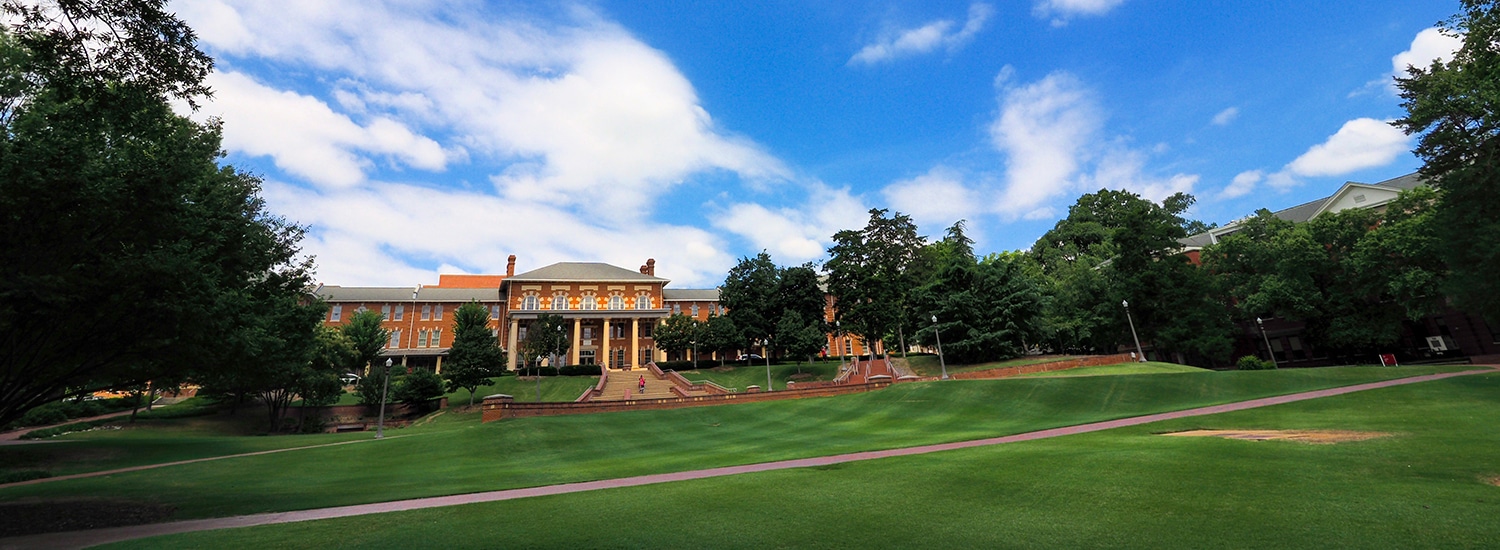
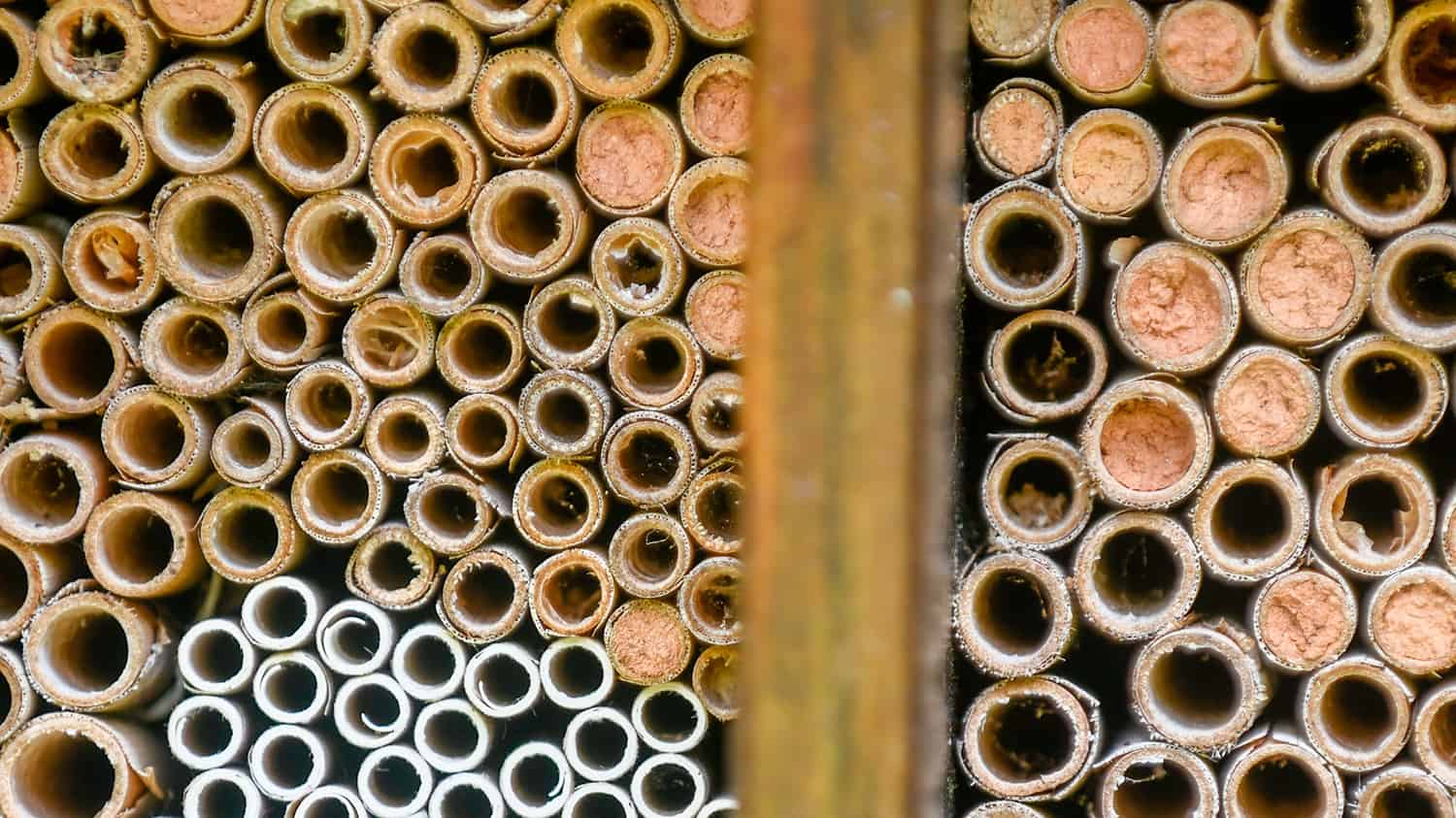
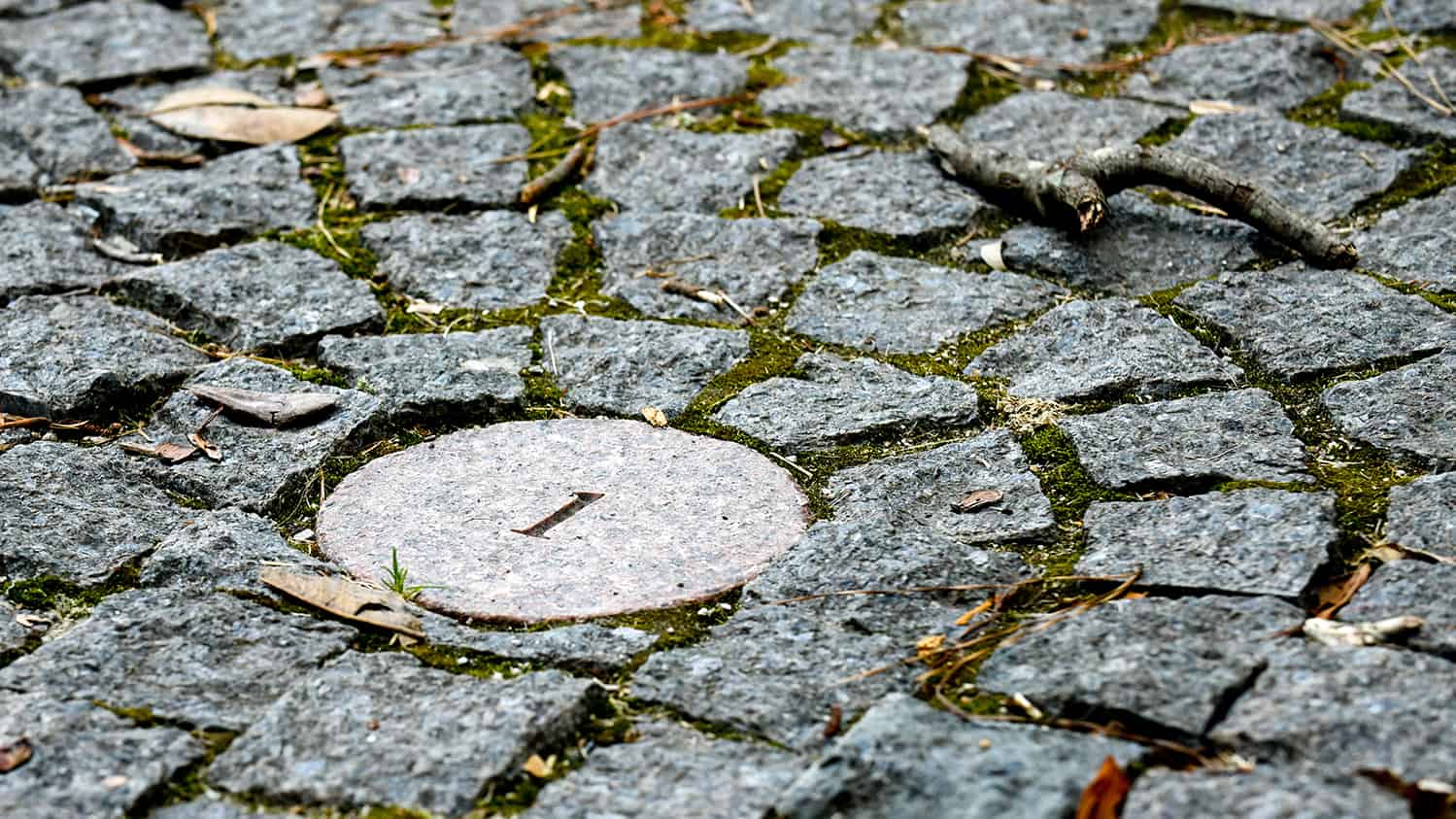
Court of North Carolina
Formerly used as everything from a cow pasture to Quonset-hut-lined housing for World War II veterans, the Court of North Carolina is one of the largest green spaces at NC State. It’s a place for leisurely picnics, outdoor lessons and the occasional snowball fight on a wintry day.
Some of the oldest buildings on campus flank this grassy lawn, which was designated in 1986 to mark the celebration of the university’s 100th anniversary. A plaque outside the stately 1911 Building, located on the court’s west side, dedicates the area to past and future generations of faculty and students.
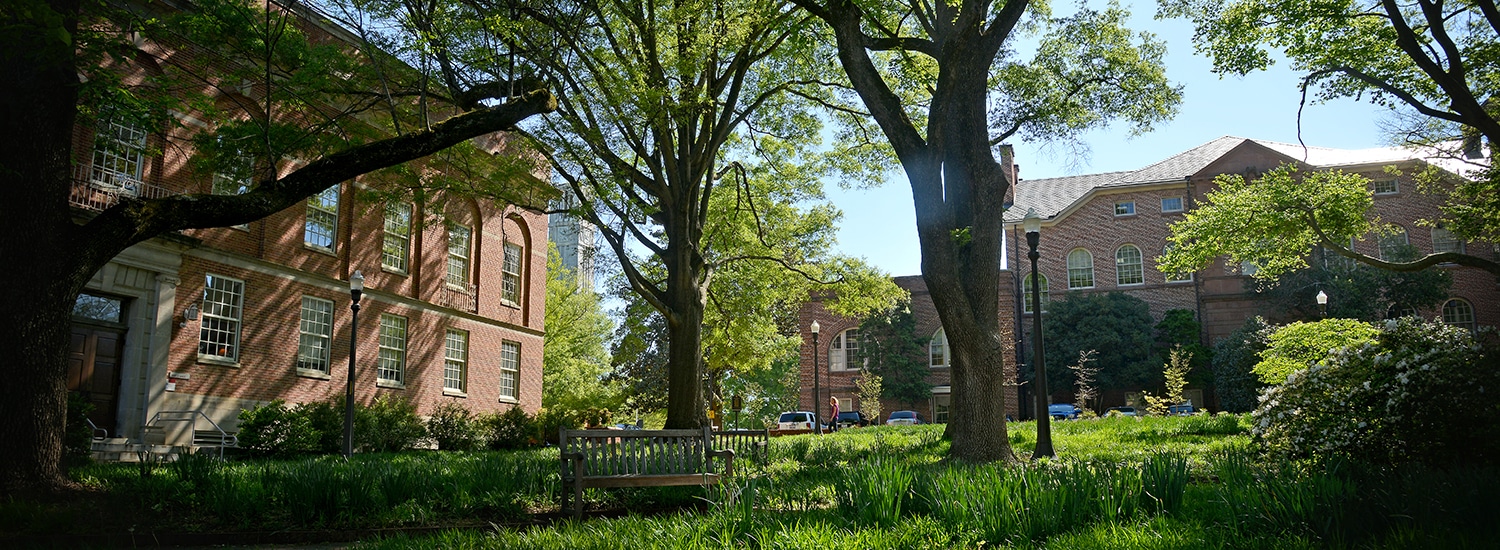
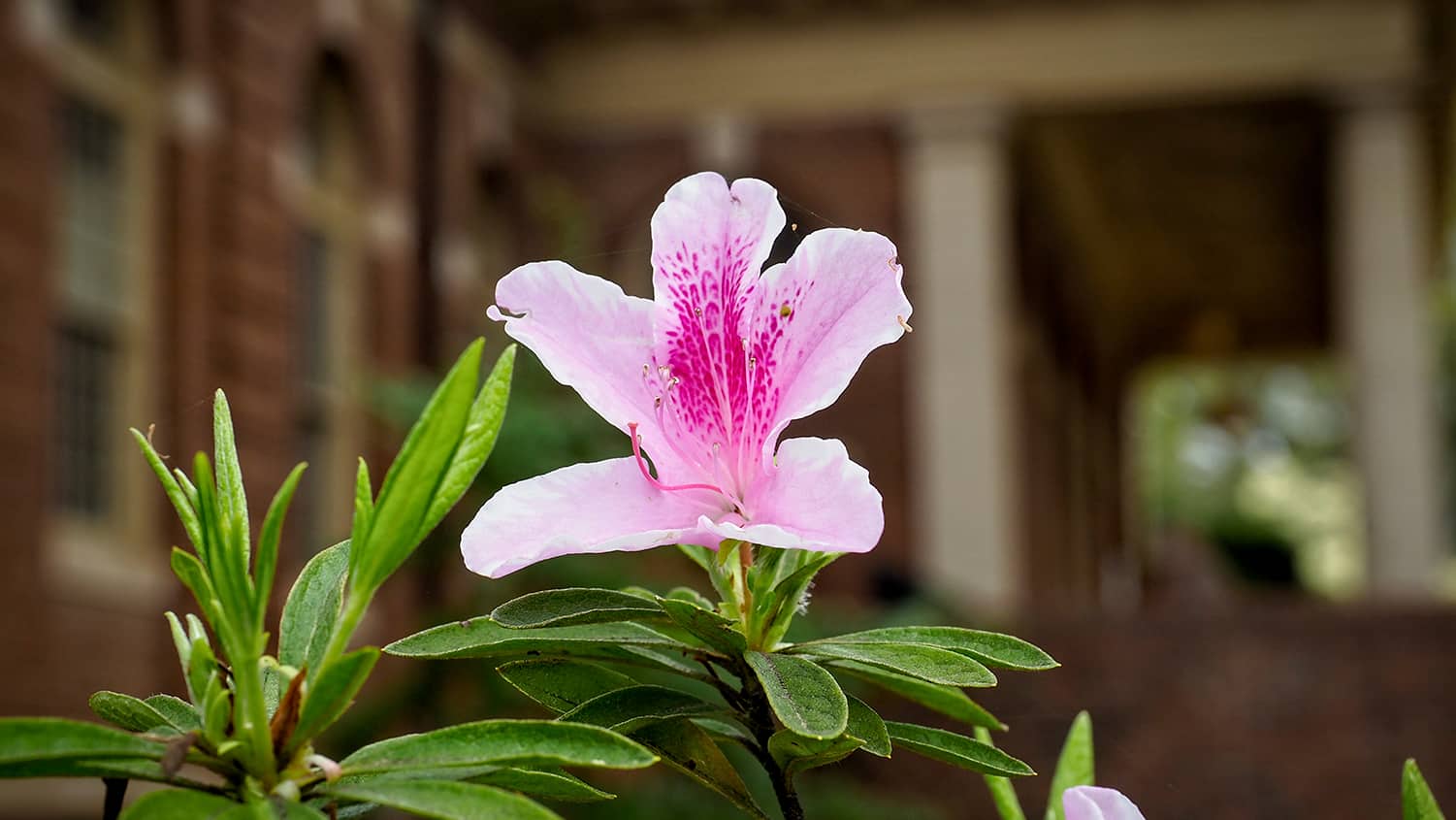
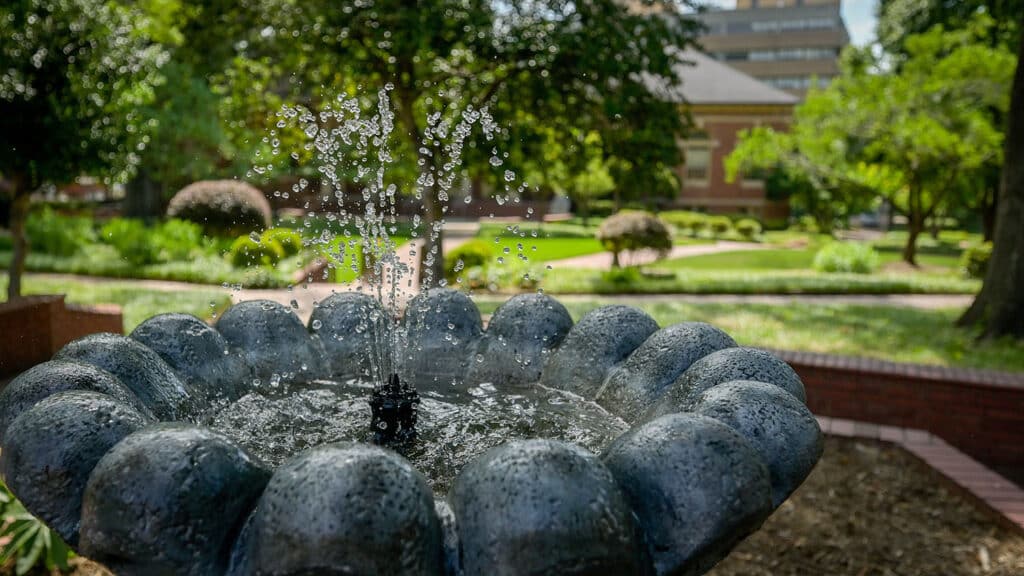
Mary Yarbrough Court
Lying in the heart of one of the oldest blocks on campus is Mary Yarbrough Court, a quiet, shady escape named after the first woman to complete a graduate program at NC State.
Yarbrough, the daughter of one of the university’s first graduates, was known to play in the court as a child. She earned her master’s degree in chemistry in 1927 and went on to champion women in her field for decades as a faculty member at Meredith College.
With female enrollment rising above male enrollment for the first time in NC State’s history in 2019, the tranquil grounds remain a place to honor the trailblazing women of our university’s past, present and future.
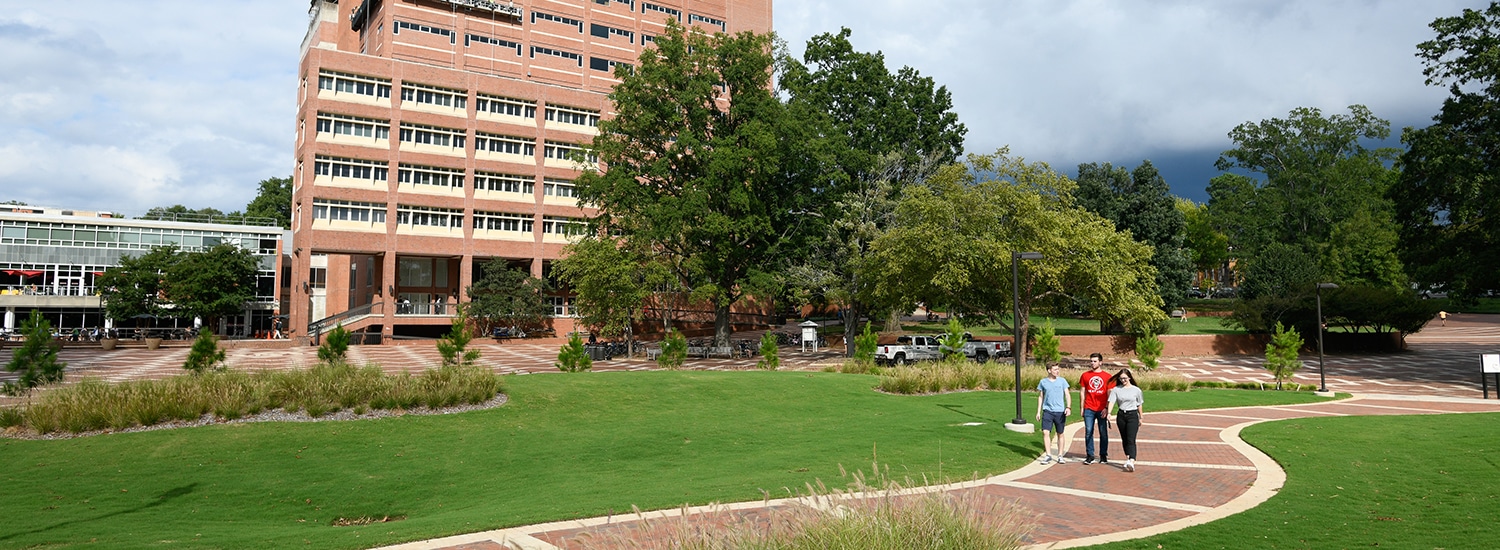

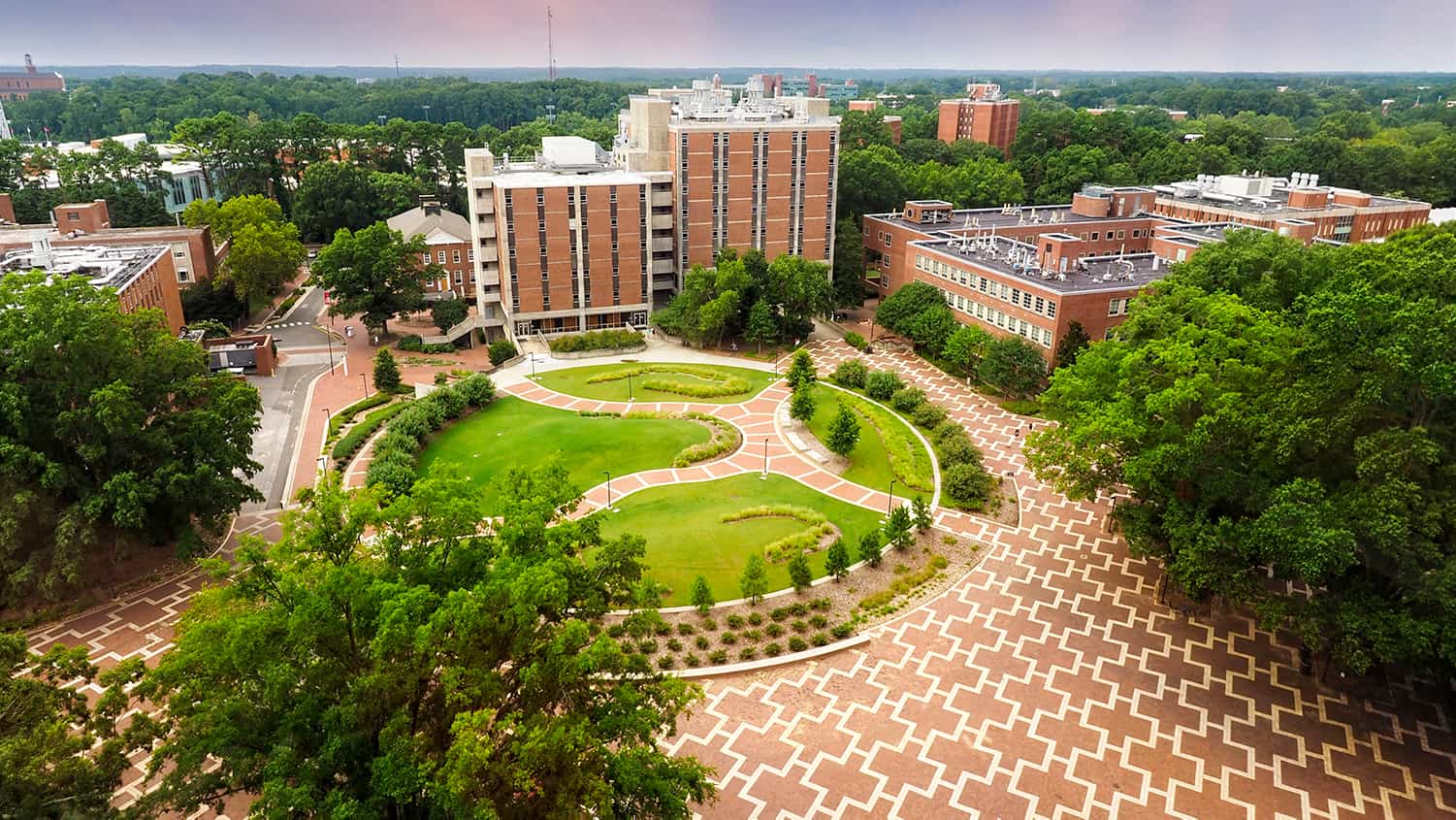
The Brickyard
It was once a turfy expanse infamous for transforming into a muddy mess after a rainfall. Now, the Brickyard serves as the Wolfpack’s public square.
Beginning in 1966, the area was paved over with red and white bricks to form a dramatic geometric pattern (and offer students a more pleasant place to traverse). The spot, formally known as University Plaza, was quickly dubbed the Brickyard — first derisively, then lovingly — and has since been host to preachers, protestors, campaign rallies, concerts, bonfires and more.
At 45,240 square feet, the Brickyard can hold roughly half of the university’s student population at one time. Throughout the year, you’ll find members of the Pack giving blood, promoting student clubs or living in shacks to support Habitat for Humanity.
It’s estimated that upward of 500 of the plaza’s nearly half-million bricks are swiped as souvenirs annually. Looking for a guilt-free way to take a piece of campus with you? Keep an eye out for surplus bricks placed nearby at the end of each semester.
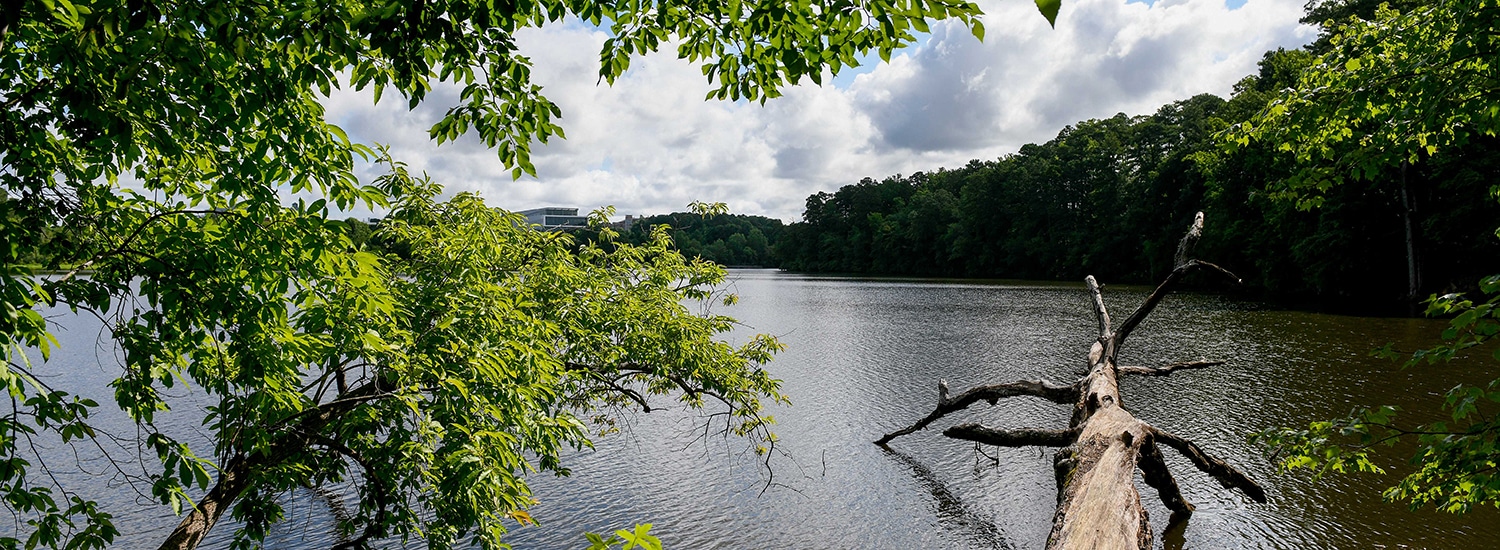
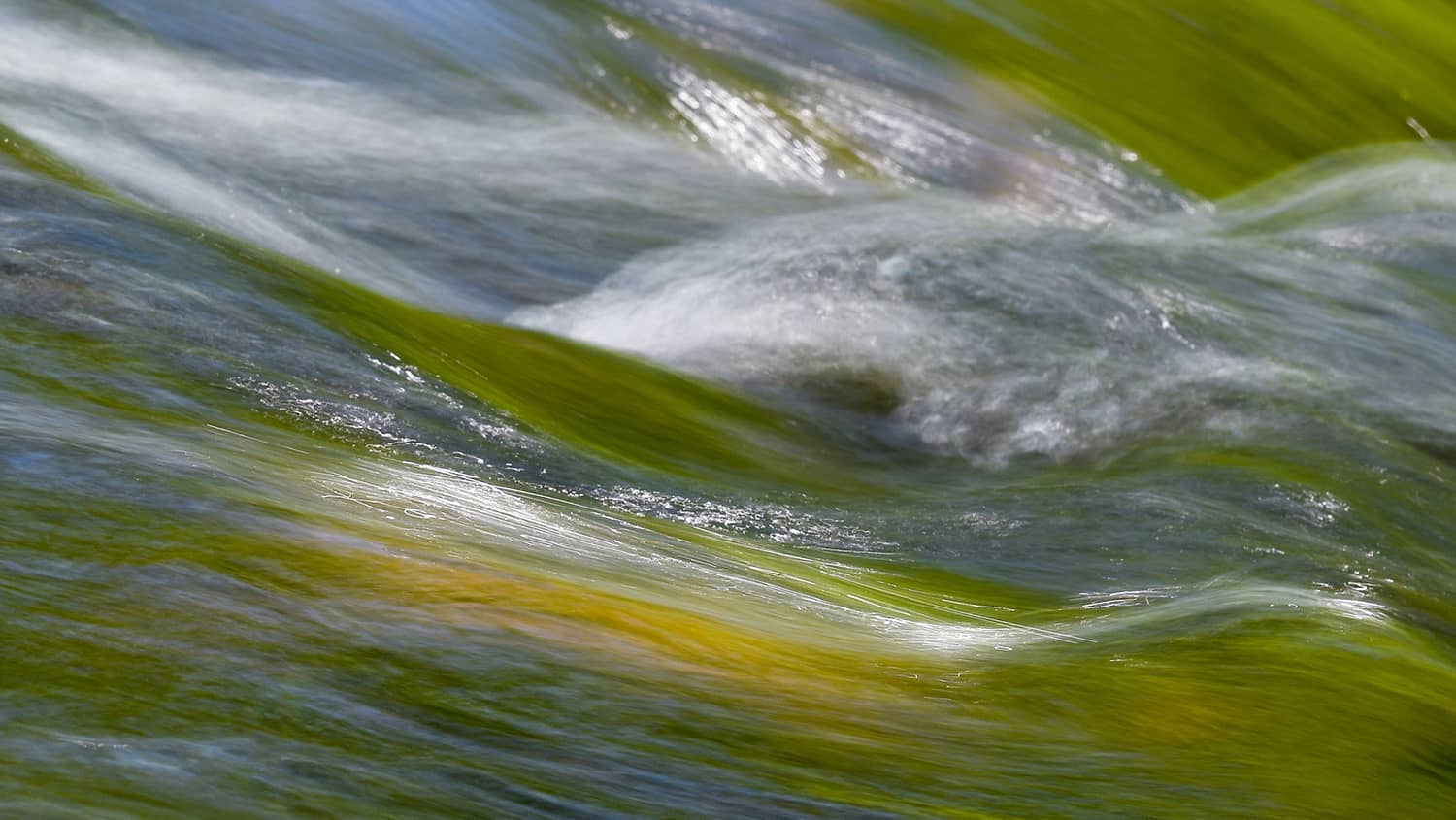
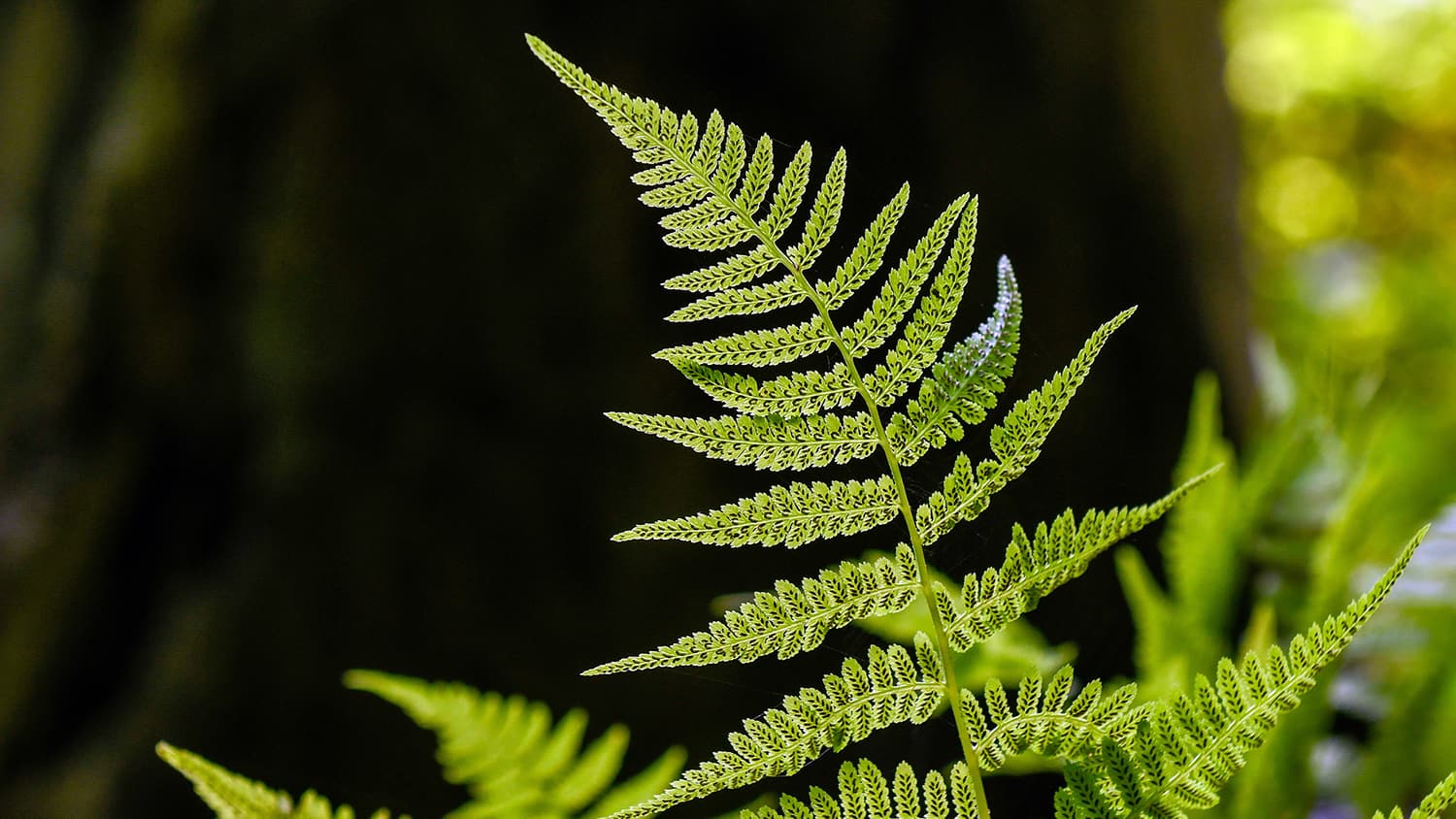
Lake Raleigh Woods
Just outside Raleigh’s humming downtown, an oasis awaits. Lake Raleigh Woods sits on 96 acres of our tech-focused Centennial Campus, reflecting our state’s natural beauty and our university’s commitment to environmental stewardship.
An educational and recreational asset, it’s perfect for bird-watchers, hikers and researchers alike. You’ll also find opportunities for boating, fishing and disc golf, along with miles of greenway trails.
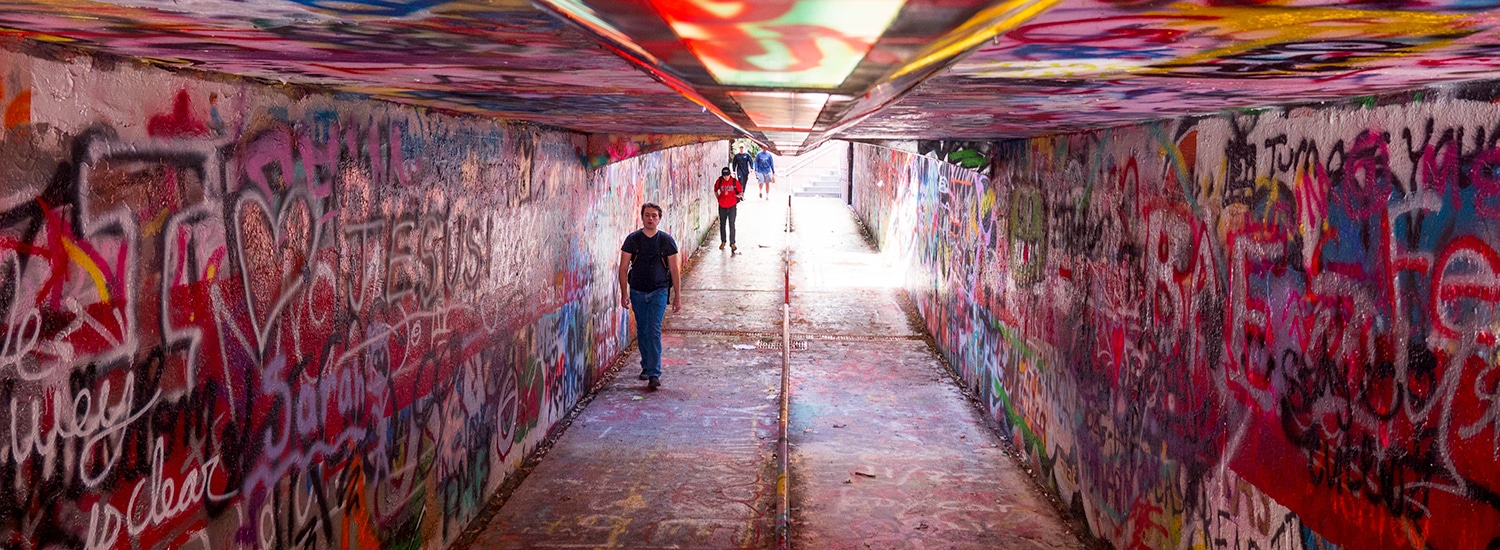
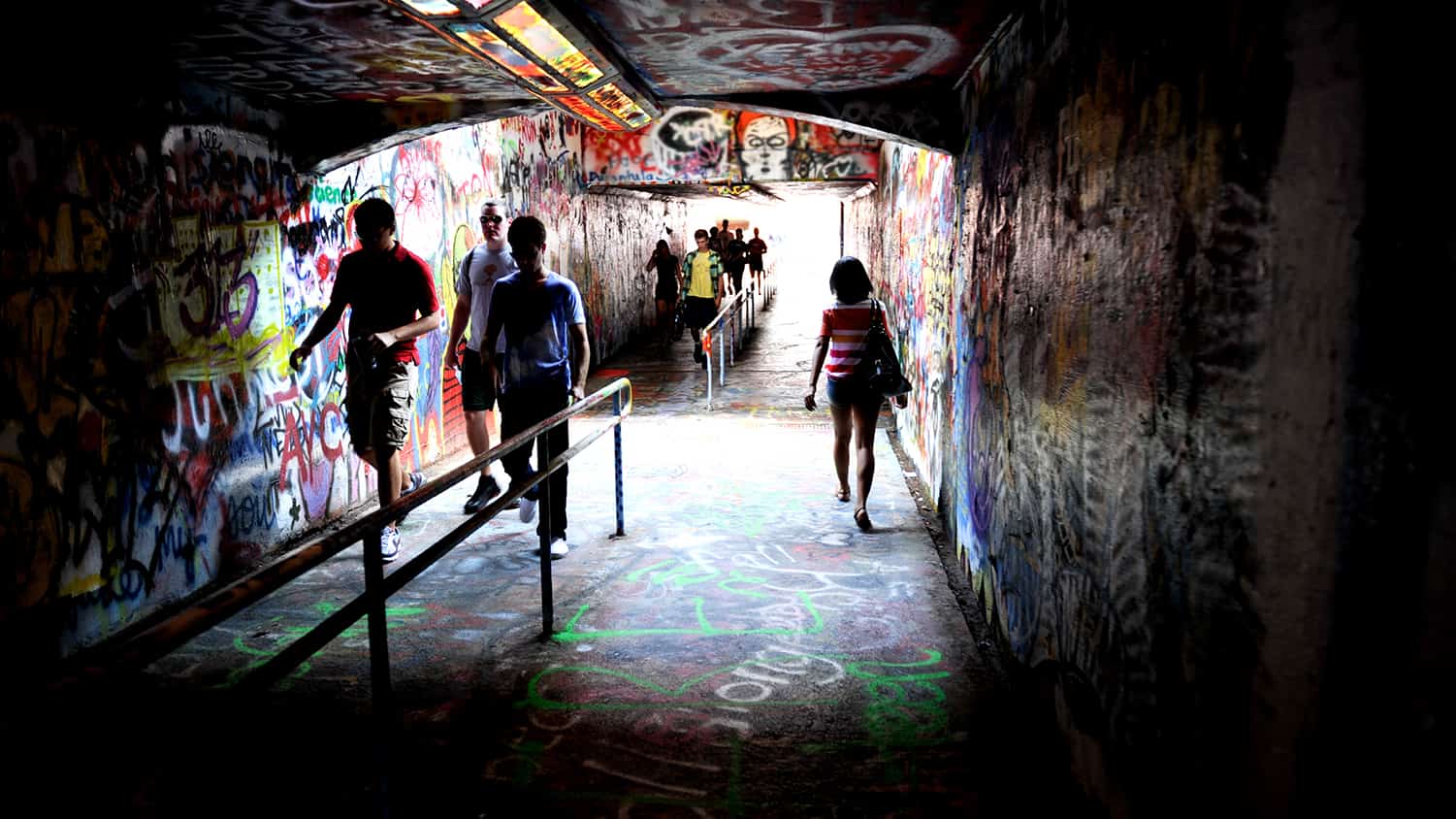
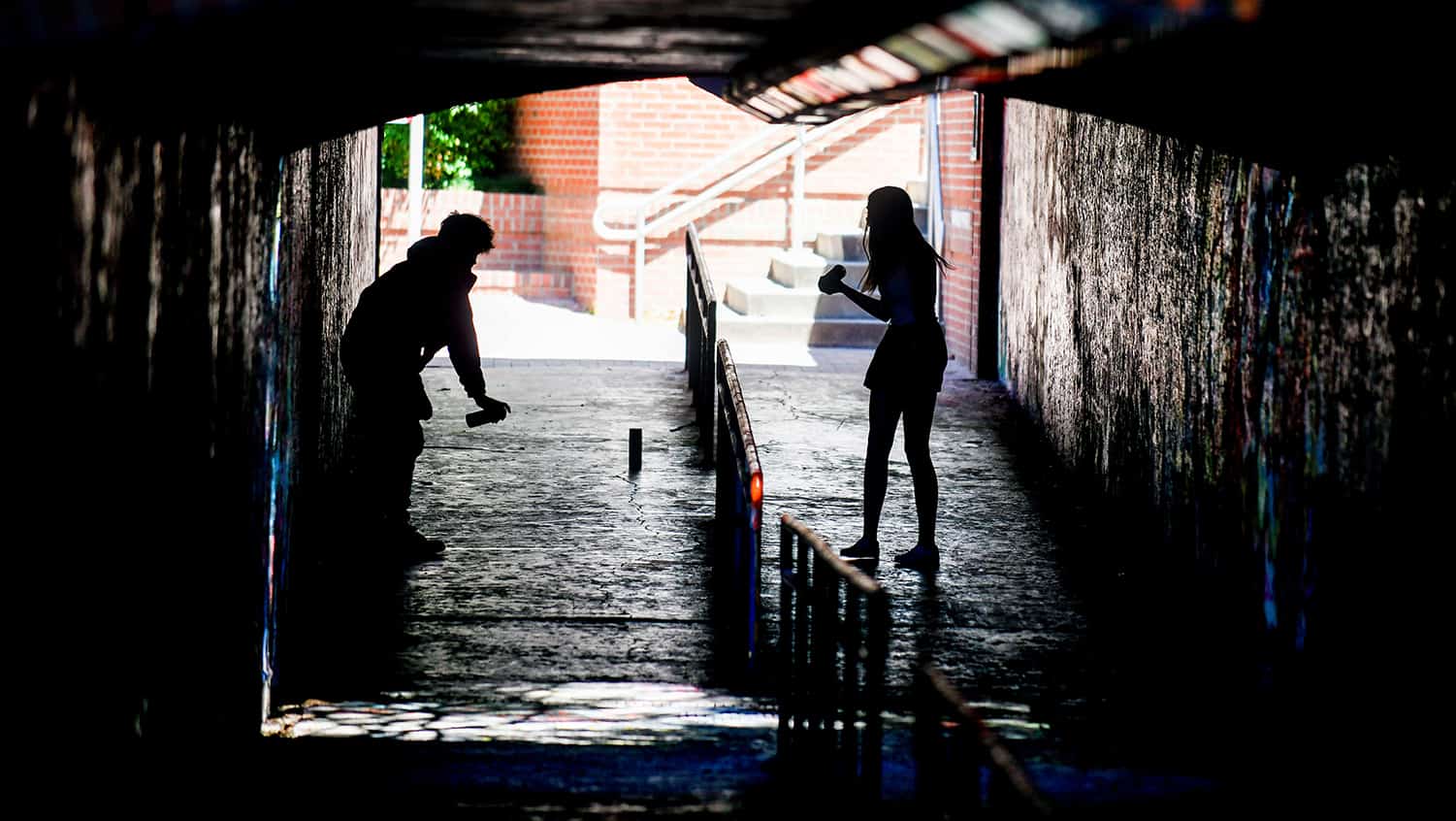
Free Expression Tunnel
Duck below the railroad tracks that run through NC State’s campus and you’ll discover a canvas for student voices — and an often-controversial emblem of the First Amendment.
The Free Expression Tunnel, a heavily trafficked underpass that connects the university’s north and central campuses, was designated a graffiti-friendly zone in the late 1960s. Students are permitted to tag the tunnel’s walls as they see fit, and the location has spurred a longstanding debate over the parameters of free speech.
Among the kaleidoscope of colors are invites to upcoming student events, birthday wishes, art and activism. Keep flaking away at the thick layers of paint, like growth rings on an oak tree, and you’ll excavate joys and grievances from generations of our student body.
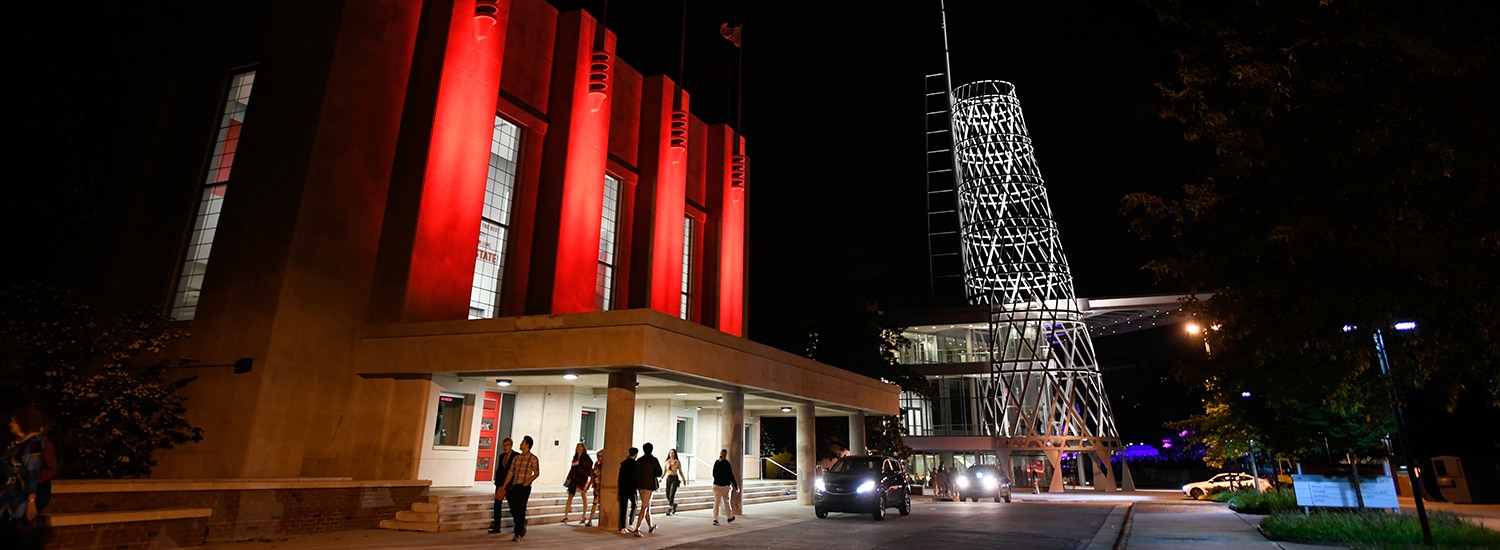
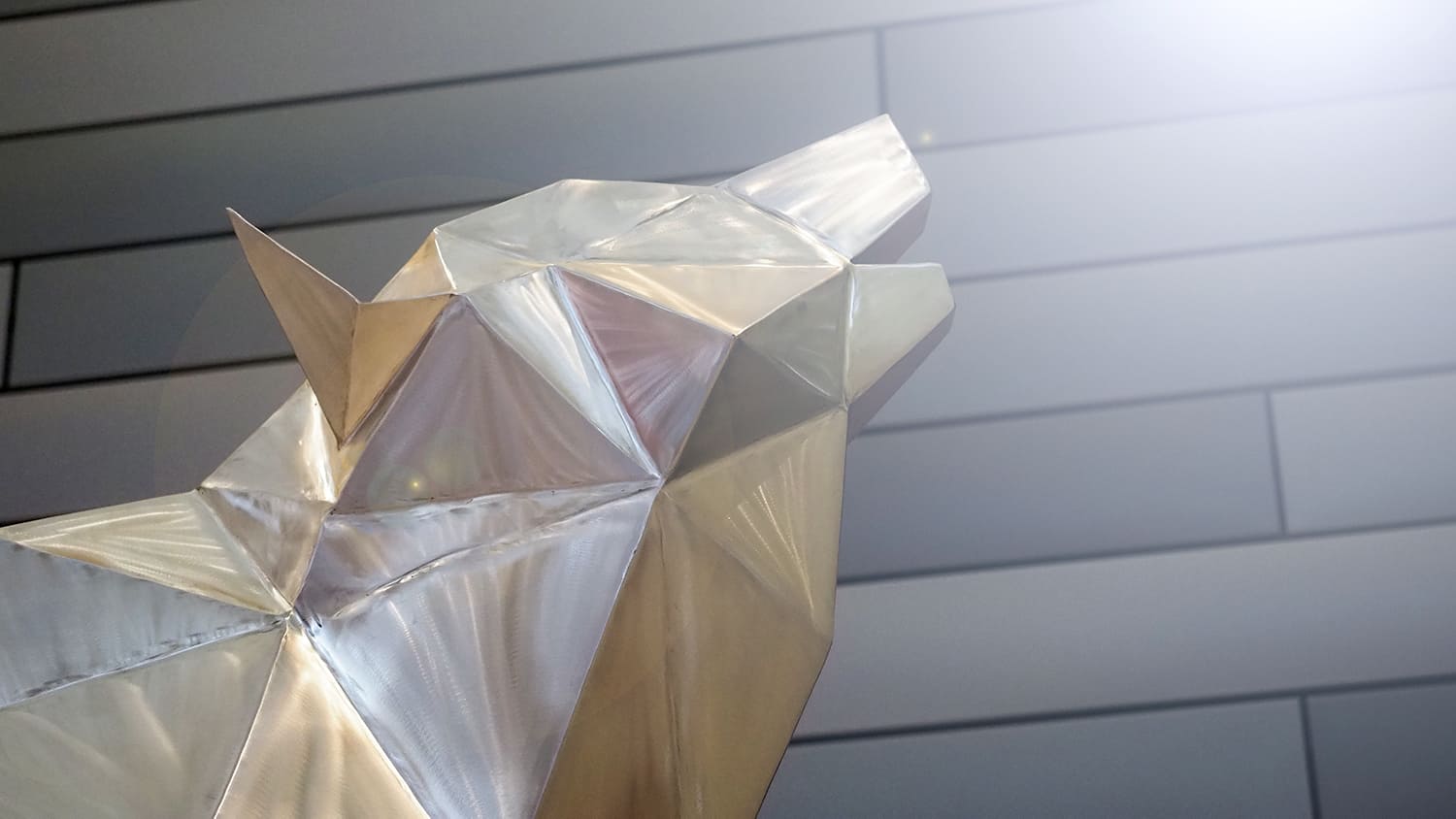
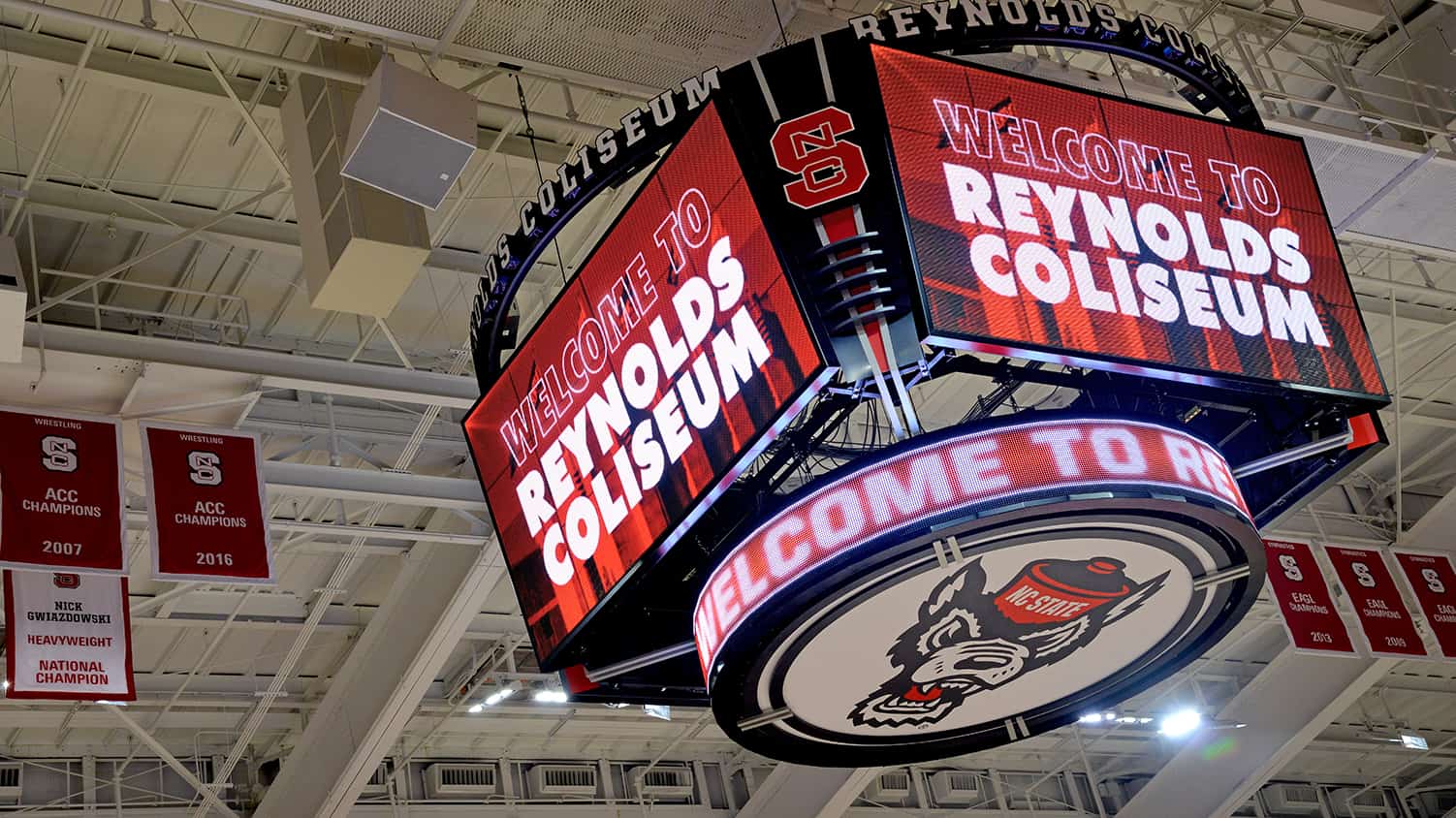
Reynolds Coliseum
You can feel the lingering electricity in Reynolds Coliseum, even among a sea of empty red seats.
It’s an iconic spot where Hall of Fame coaches like Jim Valvano and Kay Yow cemented their legacies. In fact, Reynolds has served as the birthplace of Wolfpack athletic tradition for decades. Upon opening its doors in 1949, it was the largest basketball arena in the Southeast. Now, exhibits that line the concourses highlight major moments in the history of NC State athletics.
The coliseum also serves as a celebratory site for convocation, commencement, concerts and keynote addresses. And major figures like John F. Kennedy, Martin Luther King Jr., Bob Dylan, Barack Obama and Lady Gaga have passed through its doors.
Today, the university’s volleyball, women’s basketball, gymnastics, wrestling, rifle and ROTC programs have made their home there, too.
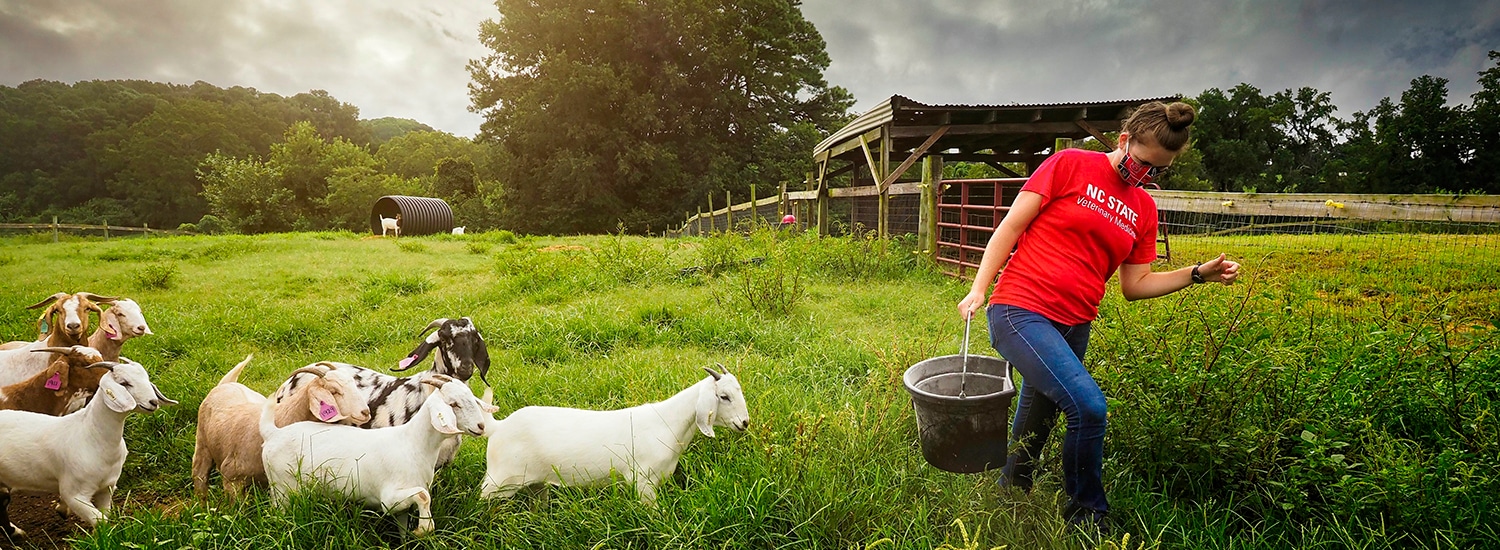
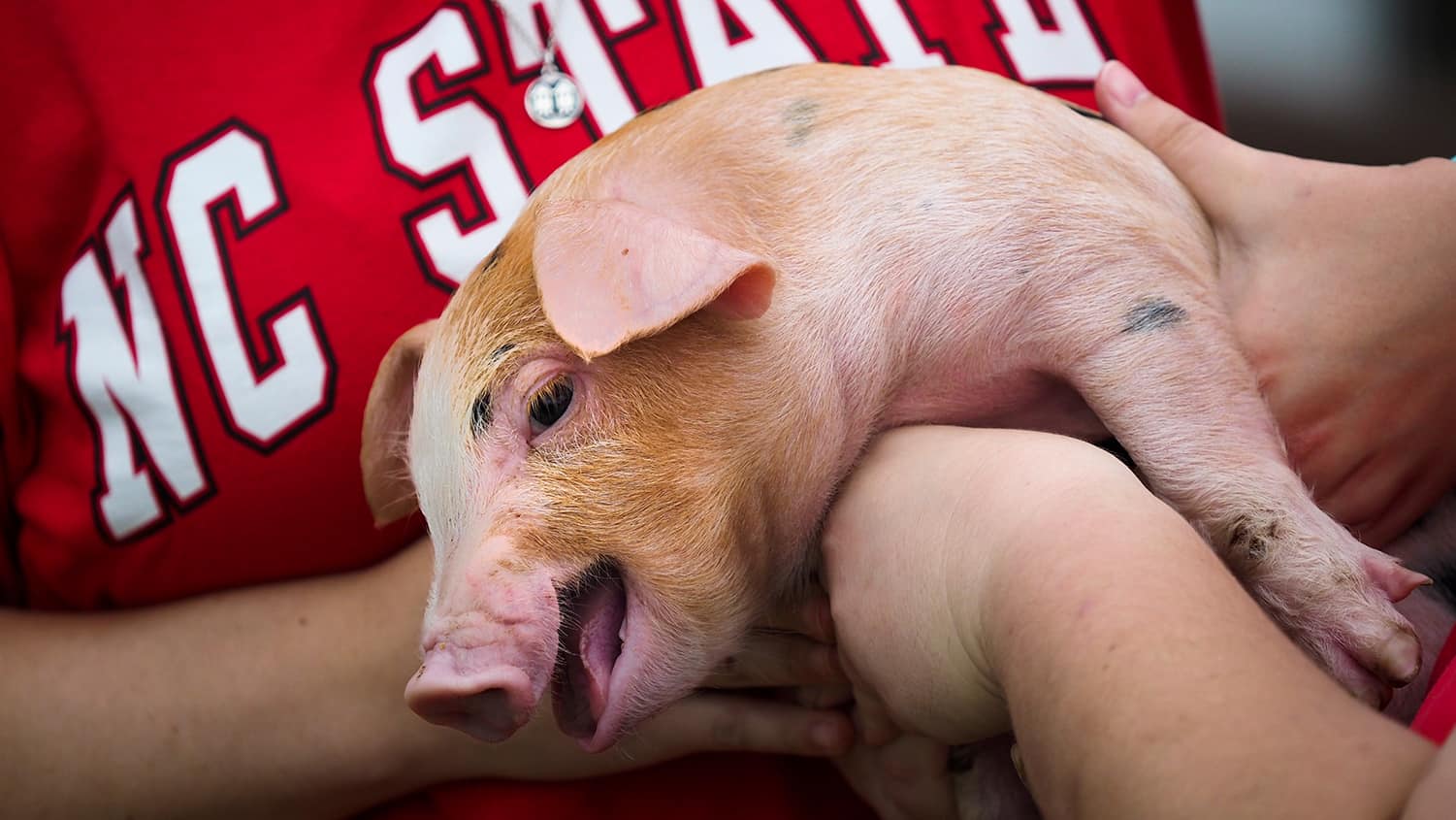
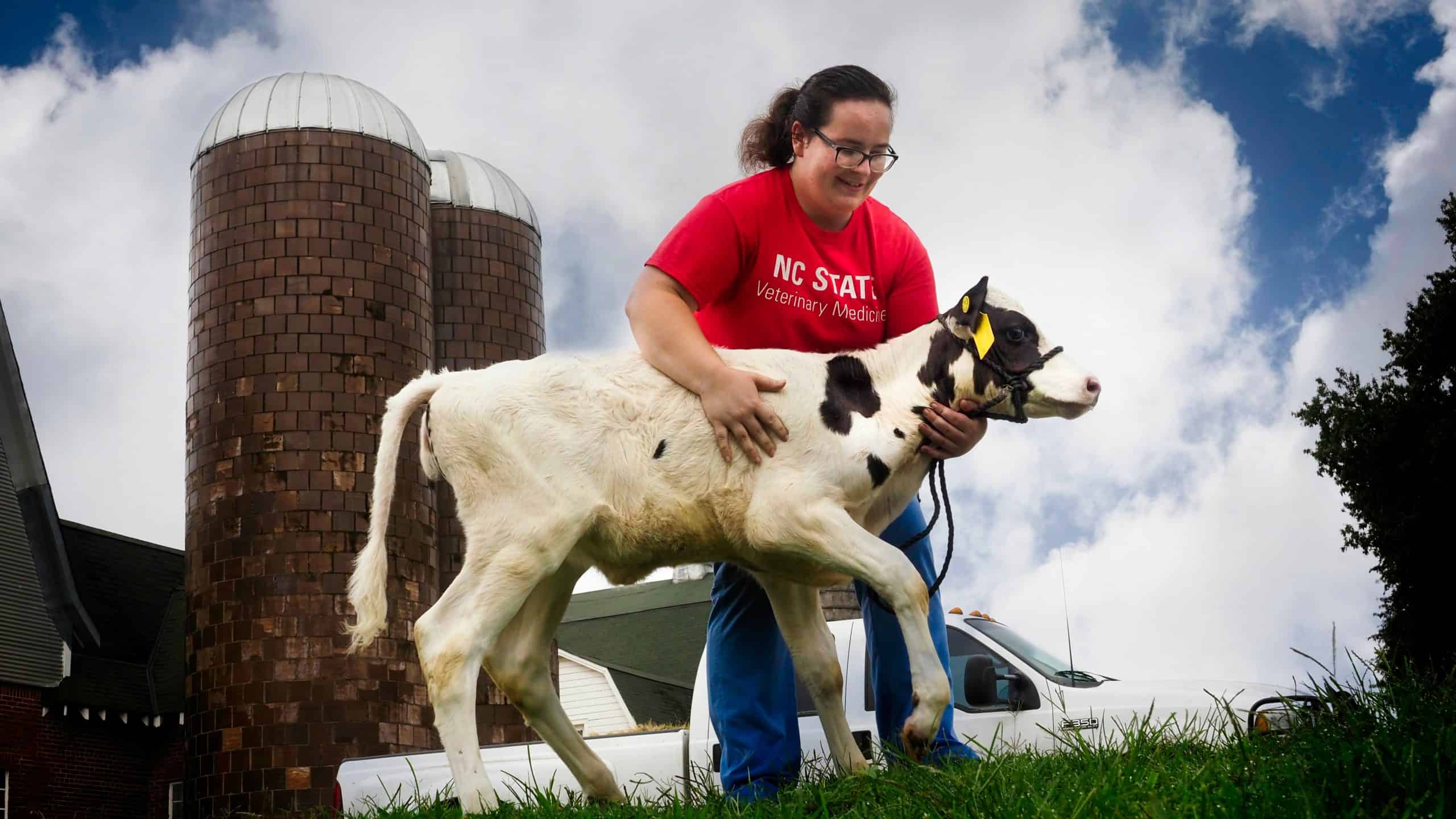
College of Veterinary Medicine Pastures
As you cruise west on Hillsborough Street, you may spy herds of grazing cows on the horizon. Roaming the College of Veterinary Medicine pastures, just west of main campus, they spend their days exploring 80 acres of lush, rolling hills.
Their home is shared with horses, goats, pigs and other farm animals. It’s all part of a dynamic teaching lab that enables students at one of the top veterinary schools in the nation to research behavior and medicine in a realistic, hands-on setting.
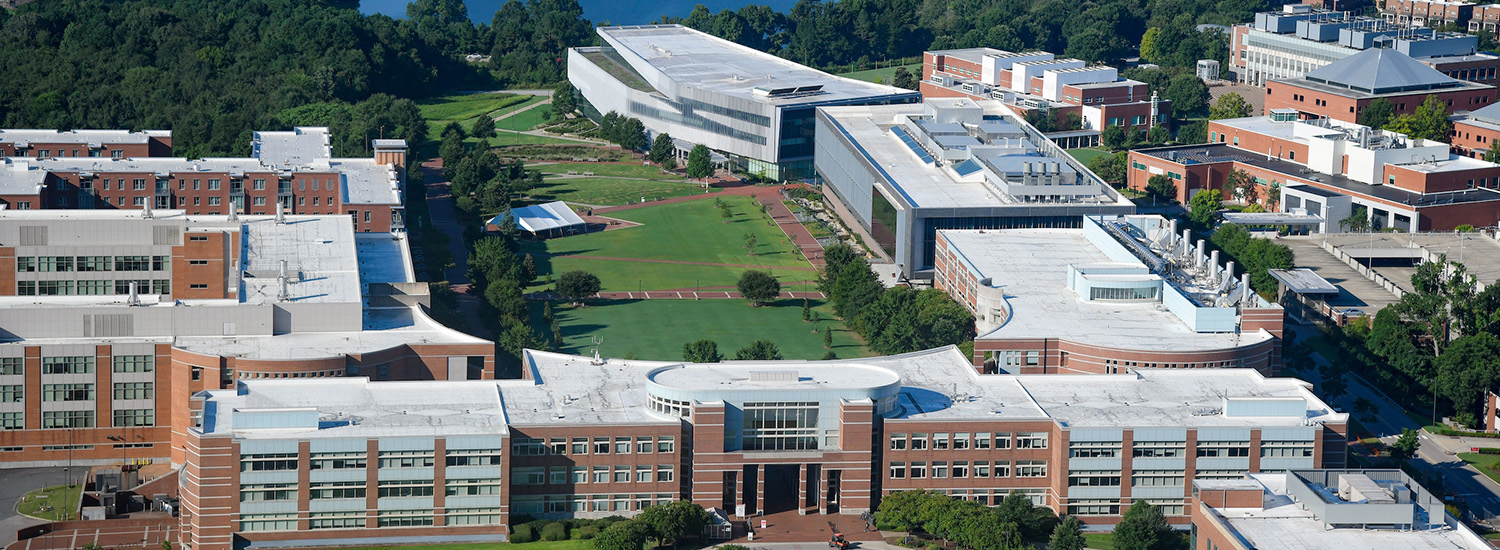
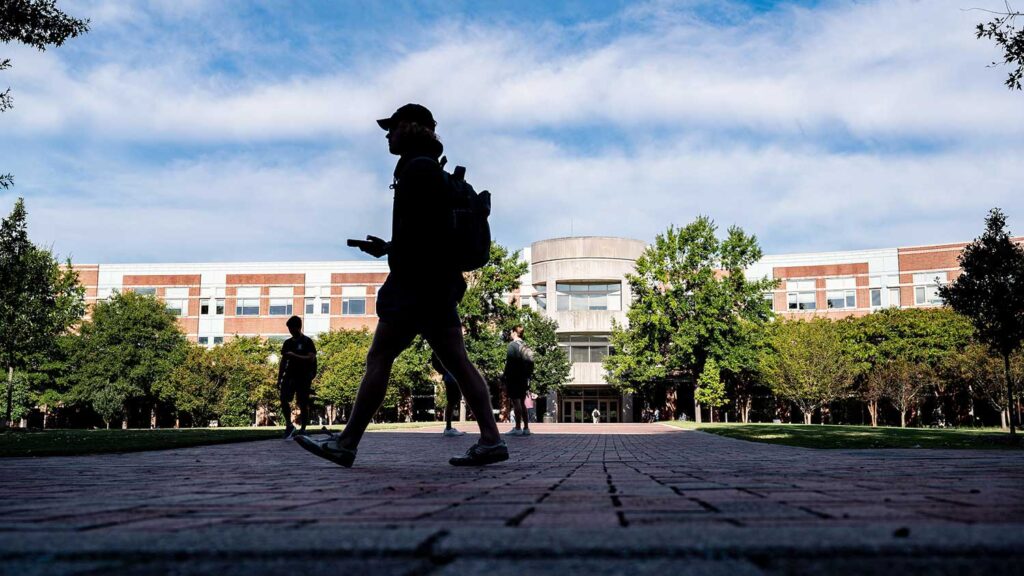
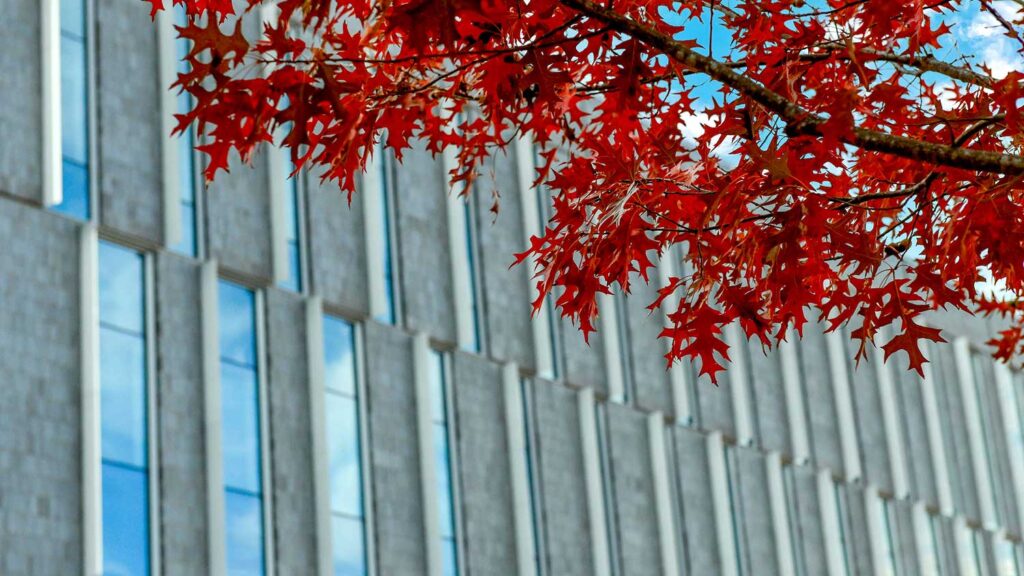
The Oval
An open greenspace enclosed by four engineering buildings and the ultramodern Hunt Library, the Oval offers a relaxing retreat in the center of our buzzing Centennial Campus.
The centerline of the Oval points directly to the Belltower and Holladay Hall to its north and to Lake Raleigh Woods to its south, connecting four Hallowed Places in a line of important features for all who study, teach and work on campus and to those who return to reflect on their academic experiences.
The Oval earned its designation as NC State’s newest Hallowed Place in 2023, honoring its historical significance to the original design of Centennial Campus.
Think or do? Gym edition. 💪🏋️👟
🎥 At NC State, we #ThinkAndDo every day. But when you’re playing “Think Or Do,” you have to choose. Watch Ep. 7️⃣

That’s a wrap! 🐺🐾🎉
Inspired by your passion and fueled by your commitment, YOU made our seventh NC State Day of Giving a success. Thank you, Wolfpack, for #GivingPack.
🎁 18,565gifts
📈 $50,563,357 raised

The biggest game of hide and seek you’ve ever played is ON. 🔎👀 We hid FIVE Wufs across Main and Centennial Campus (and you’ve already found a few of them). Find one and win $500 for the college or unit that matters most to you as part of NC State Day of Giving. ➡️ Swipe to practice finding them.
Let the hunt begin! #GivingPack
P.S. Each Wuf comes with instructions and no, these photos are not clues. It’s going to be harder than that, y’all!

NC State Day of Giving starts NOW! 🐺⏰‼️
For the next 24 hours, we’re #GivingPack. We are passion inspired and donor fueled. Make a gift, participate in challenges, and most importantly, support your passions.
Let’s show the world what the Wolfpack can do when we come together.

